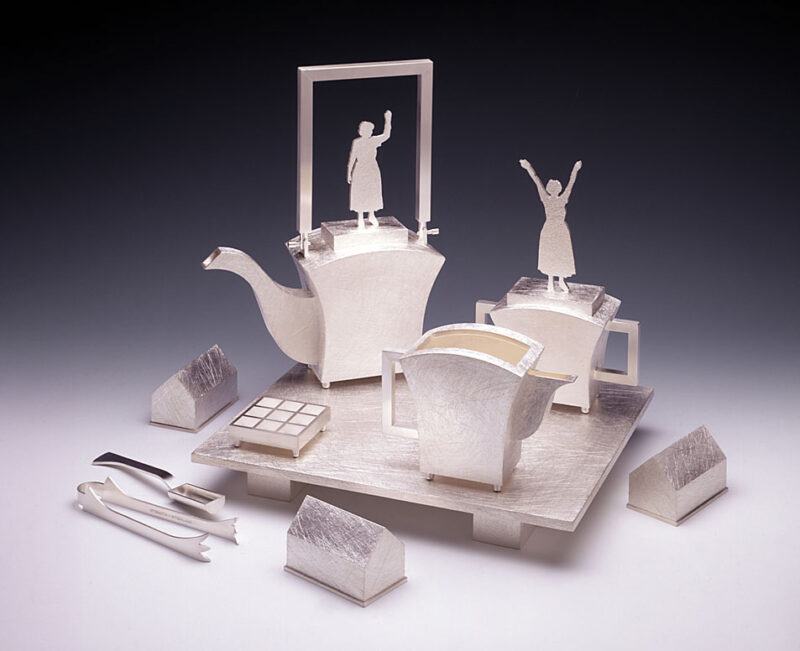
Christina Smith
The American artist Christina Y. Smith (b. 1951) “[grew] up in a family where tea was important.”[i] She remembers receiving her first tea service at

The American artist Christina Y. Smith (b. 1951) “[grew] up in a family where tea was important.”[i] She remembers receiving her first tea service at
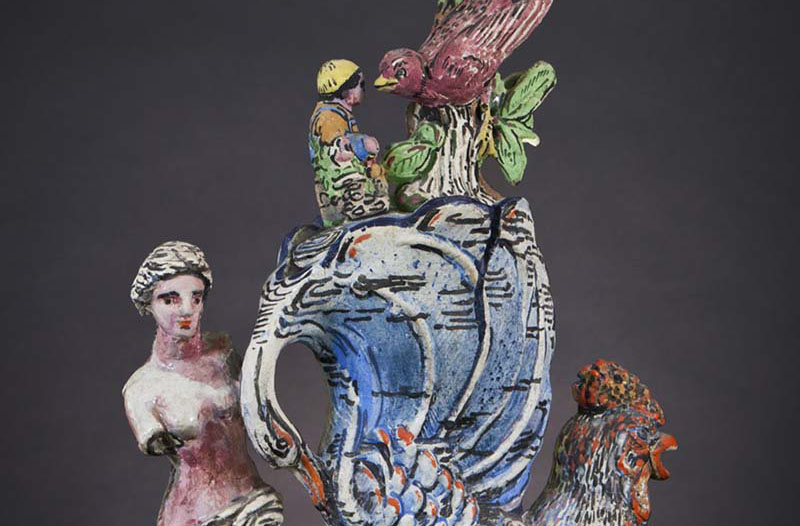
“…If you [make art] based on what is stylish, or is acceptably good, then you have nowhere to take it.”[i] – Viola Frey The American
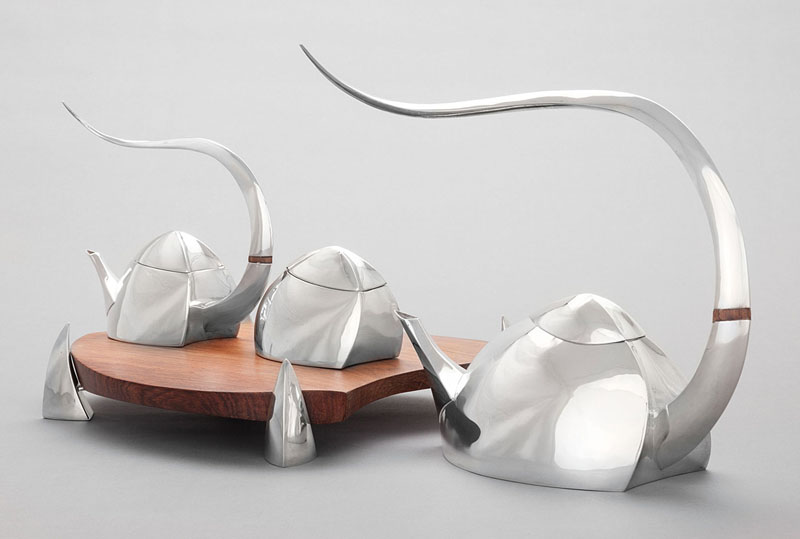
“The vessels of Michael and Maureen Banner resemble nothing so much as the perennial flowers that surround their rural Massachusetts home and studio…They seem to
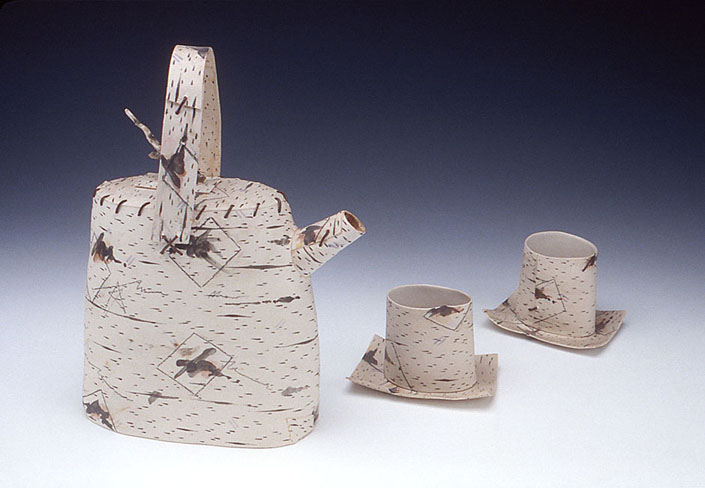
“I like my work to speak, delight, amuse, and surprise…”[i] -Gail Ritchie Since the 1970s the American artist Gail Ritchie (b. 1947) has created work
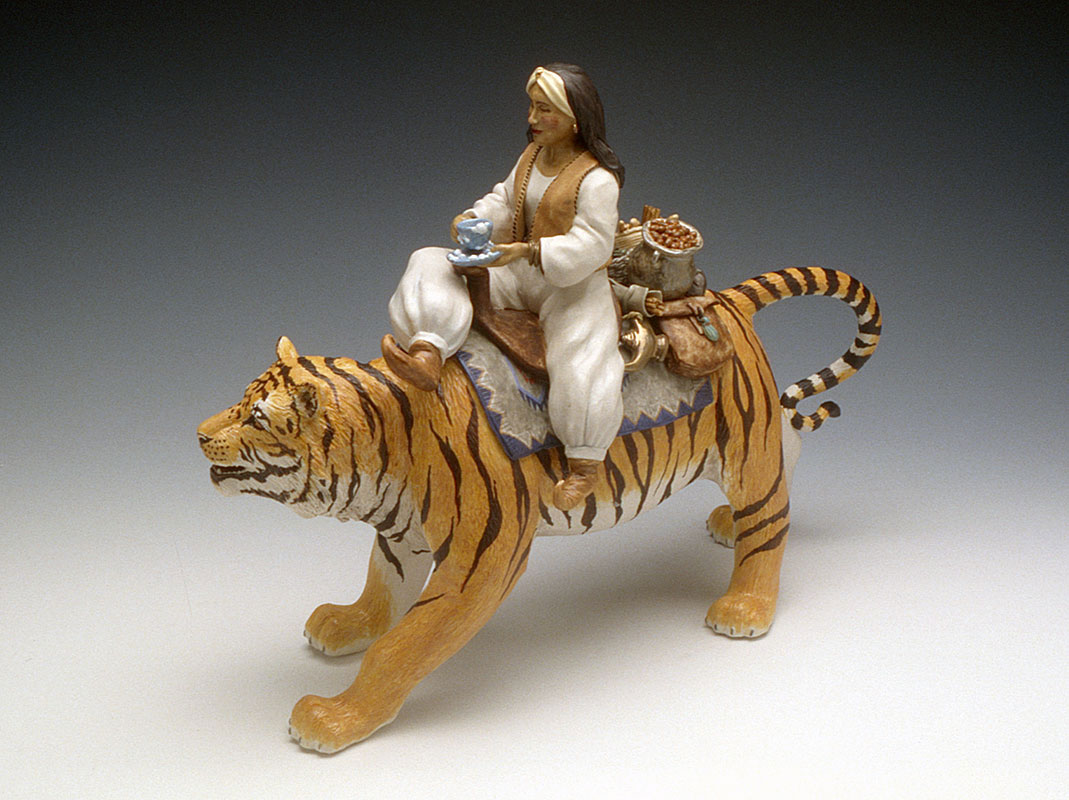
“A life with clay is a meaningful life.”[i] – Kathryn McBride The American artist Kathryn McBride (1950-2012) has been described as a “bright light” that
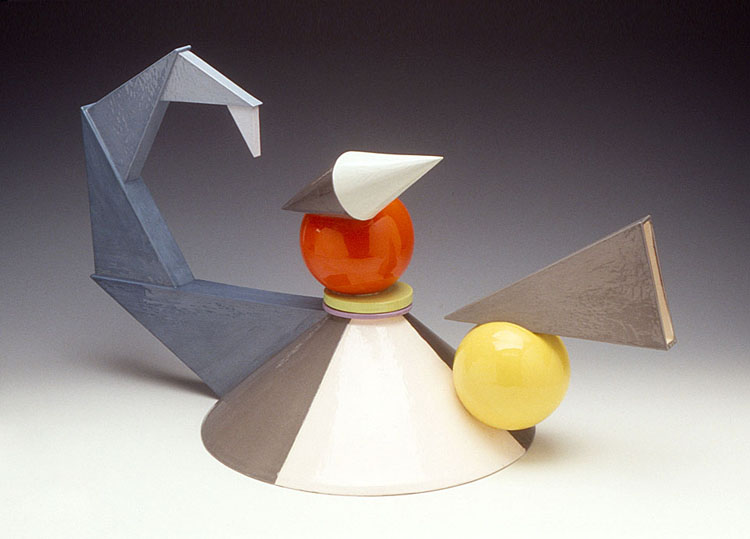
“I am a maker of things, a hand-skills guy, so ceramics was my romantic vision. I wanted to be a potter wearing funky sandals and
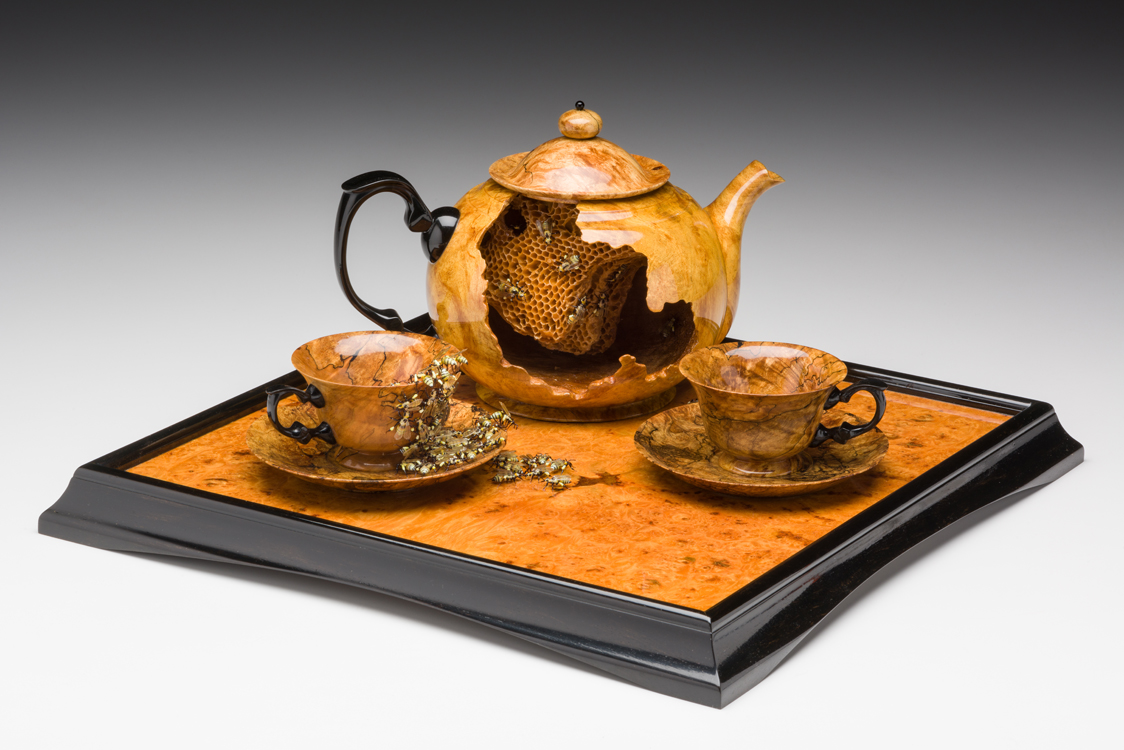
Artists Michael Mangiafico and Edward Pinto collaborated on this spectacular sculpture, Honey Pot Tea Set, bringing to bear their respective talents in glass and wood. Mangiafico
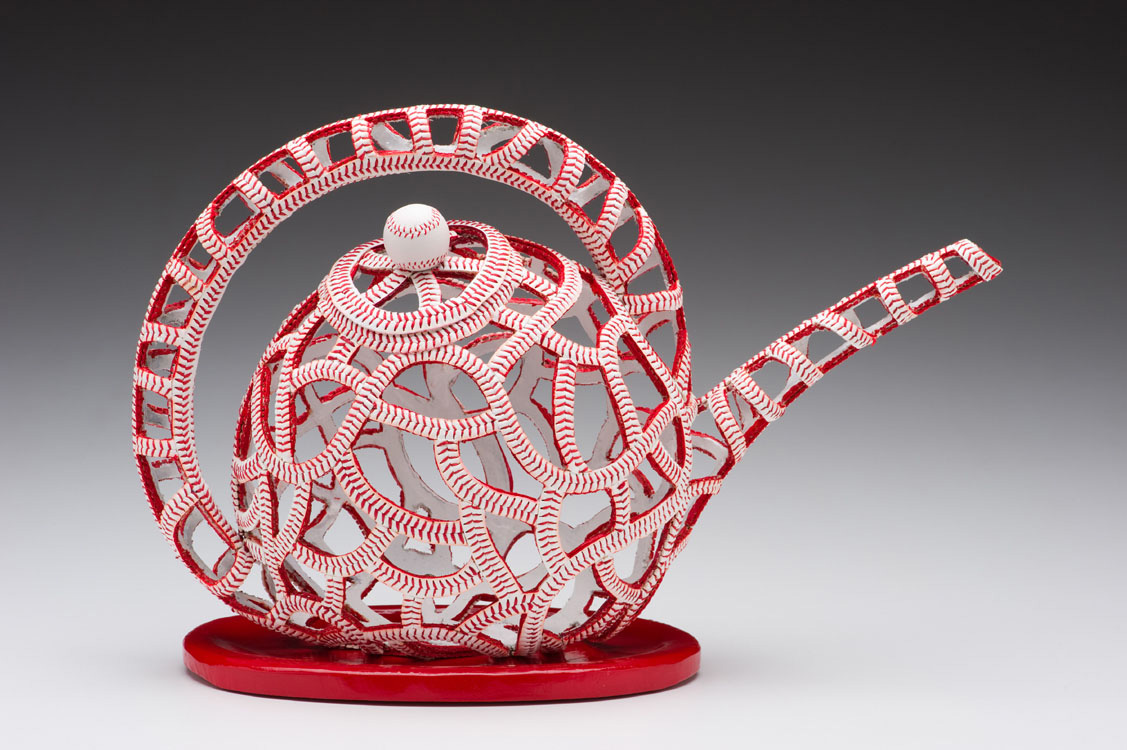
“My work describes the nature of what I know about humanness. It incorporates both destruction and construction. It begins with a mental notion and evolves
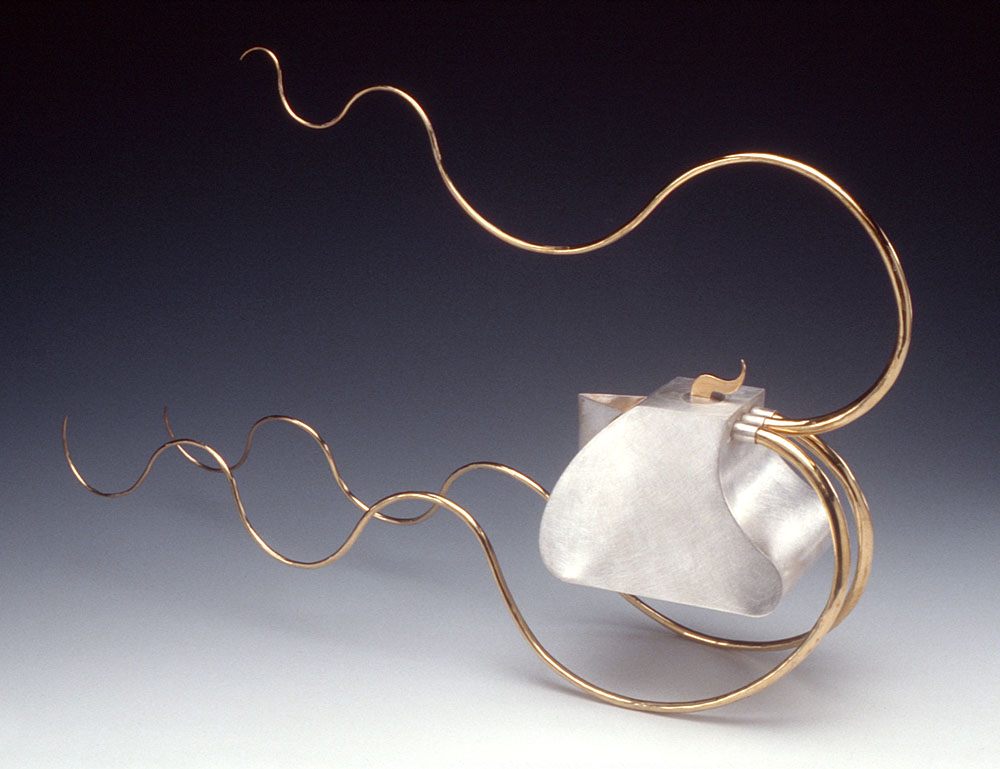
The artist Kevin O’Dwyer (American/Irish, b. 1953) has received international recognition for his work which ranges from holloware and jewelry to photography and large-scale outdoor
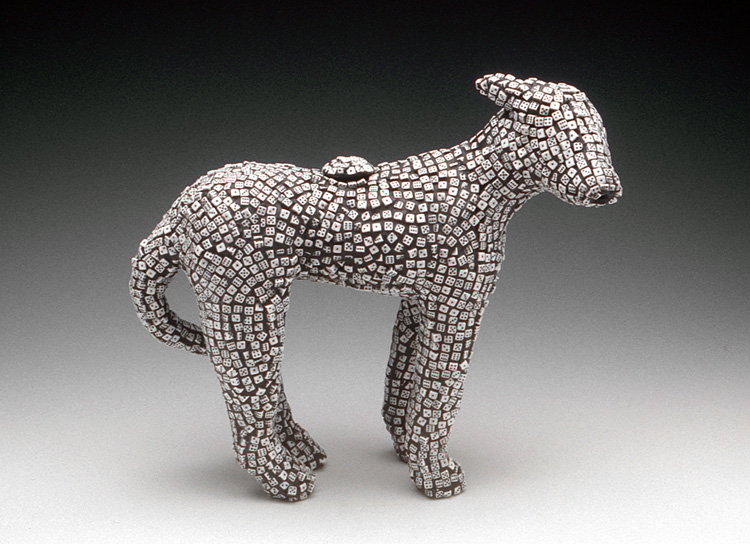
The sculptor Mary Engel (American, b.1963) is known for her whimsical animal forms that she covers with found objects such as watches, beads, buttons, and
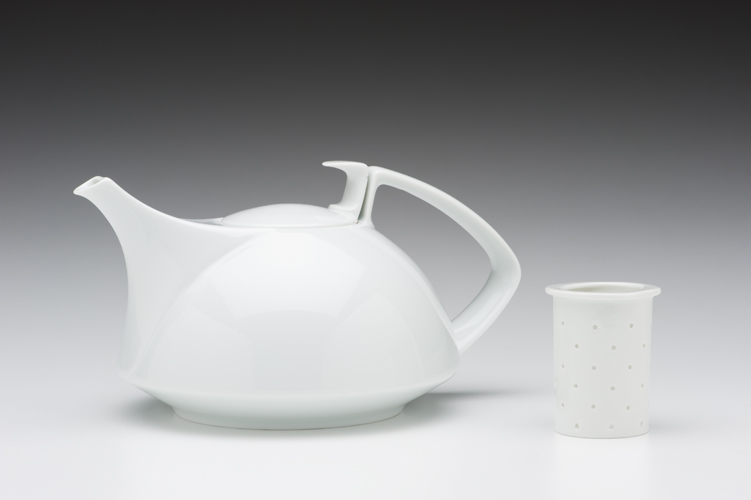
Adolph Georg Walter Gropius (German, 1883-1969) was an innovative architect, an influential educator, and the founder of the revolutionary art school known as the Bauhaus.
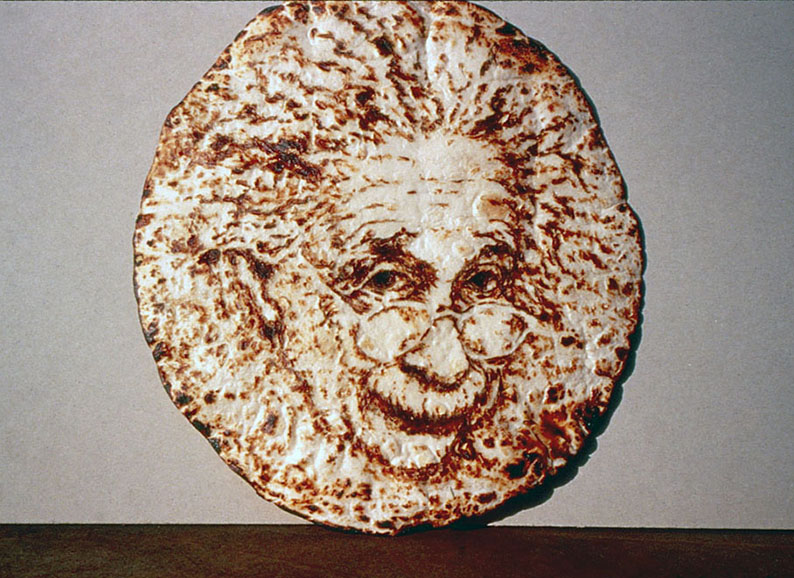
Sarah Perry (American, b. 1956) is known for her ingenious animal-inspired sculptures that rely heavily on an array of found objects. She scavenges for materials,
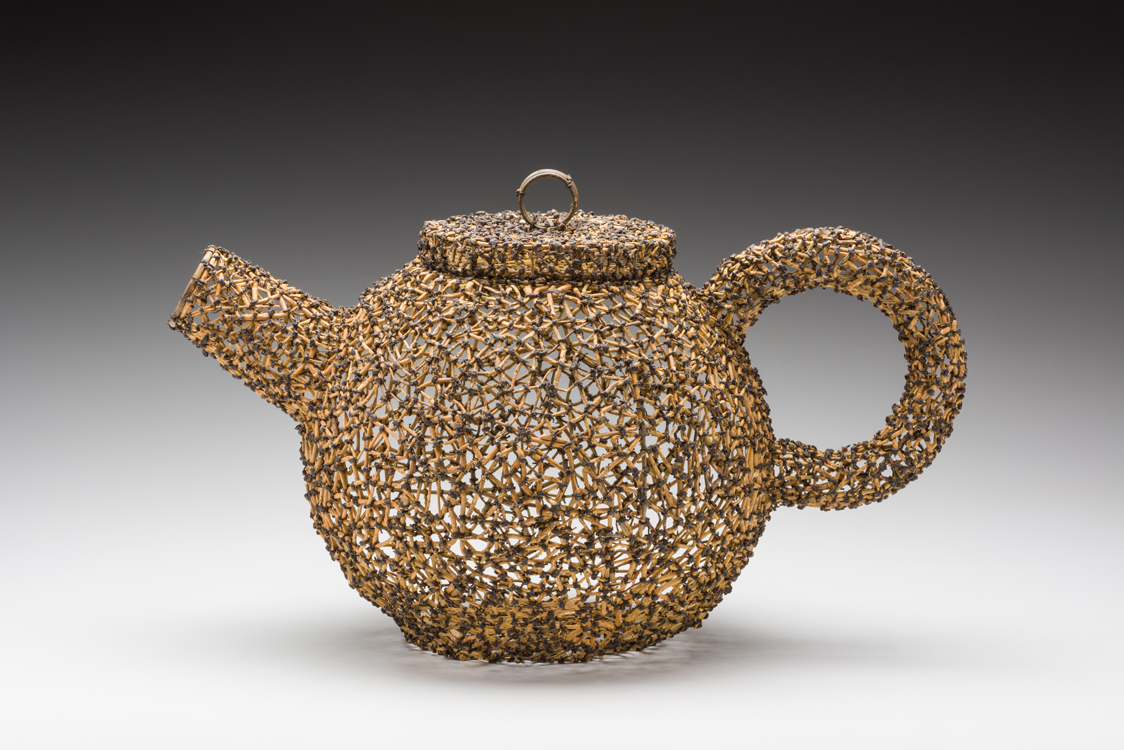
“Baskets. Even the word seems humble, self-effacing, and traditional…No one expects a concert of contemporary music to sound like Bach, or a contemporary painting to
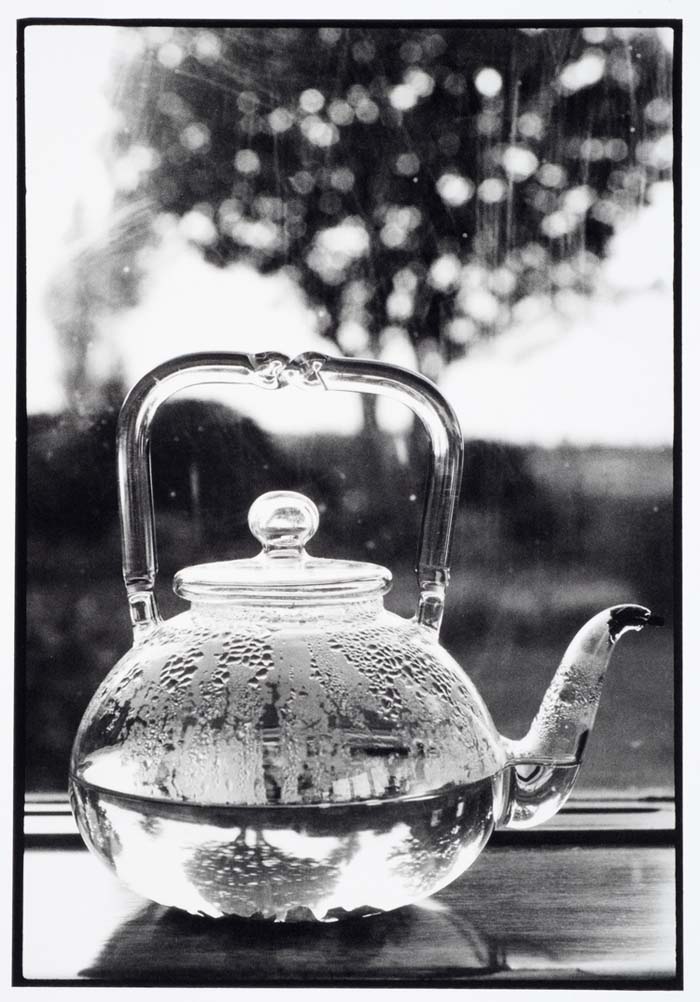
“I was a bit shy and introverted but looking out through the lens…I forgot myself and I could actually see life. This enthusiasm came out
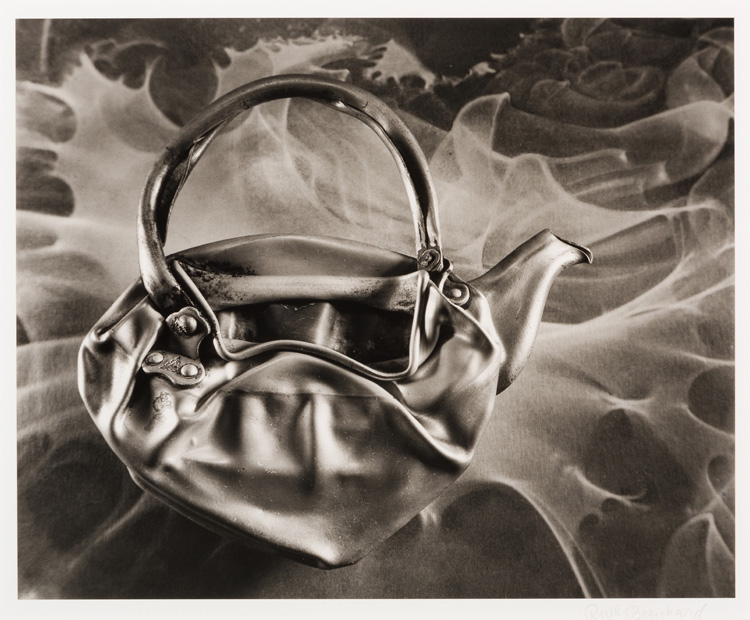
“For a photographer, light is the real teacher. But it is more than that. Light is the reason for my photographing at all. It is
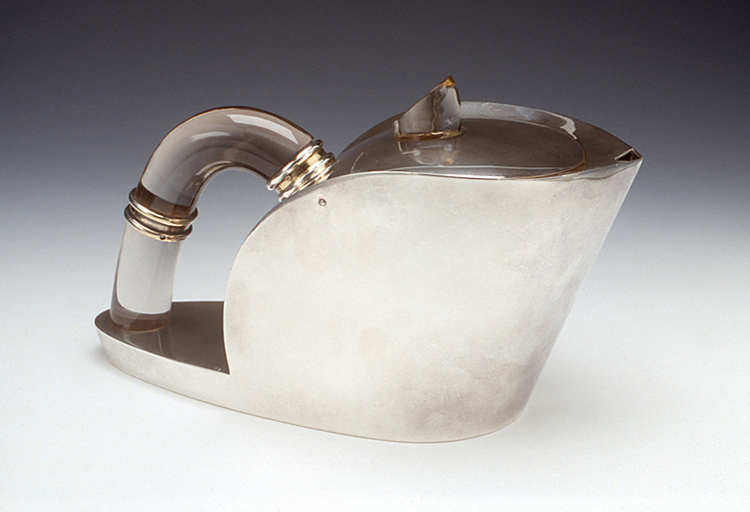
“Modernism was not conceived as a style but a loose collection of ideas. It [is] a term that [covers] a range of movements in art,
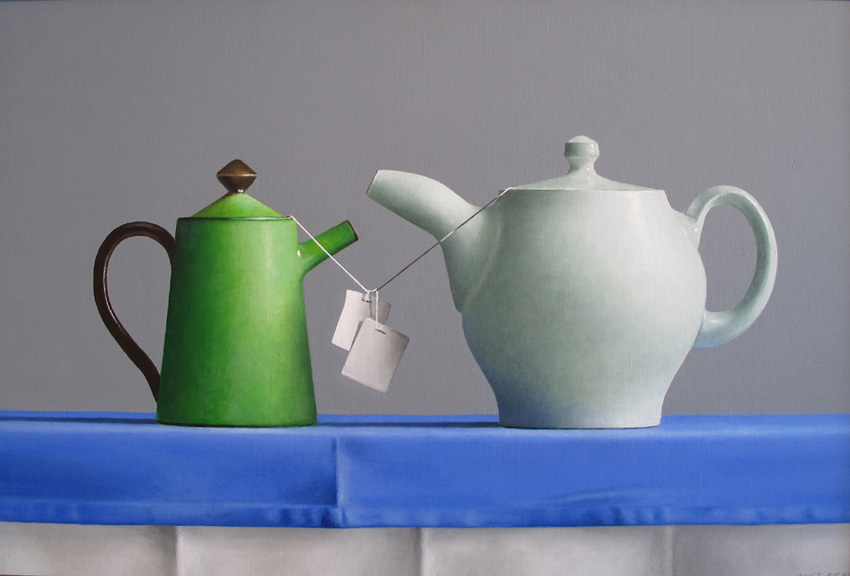
A still life is a work of art that features an arrangement of inanimate objects either natural or man-made.[i] While people have depicted their food,
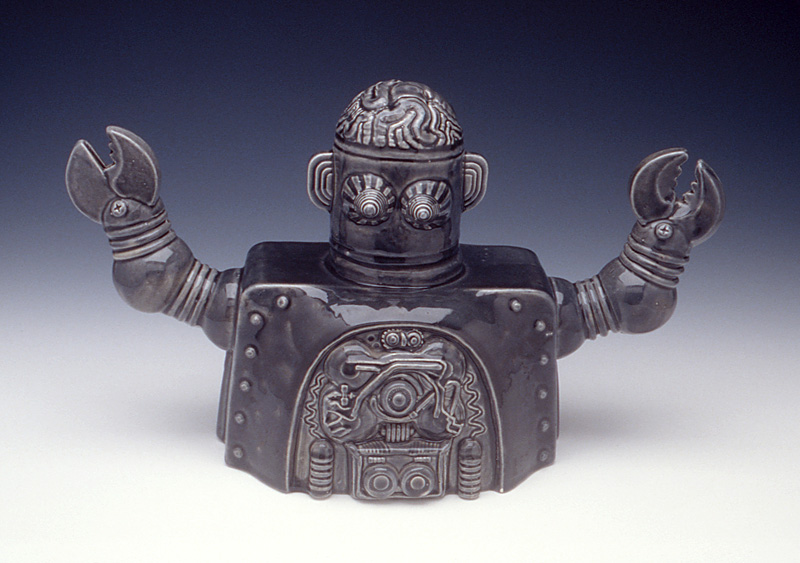
“Throughout his career, Clayton Bailey’s art always leaned more toward flames than flowers…From the 1950s until his death in June 2020, Bailey embraced the strange,
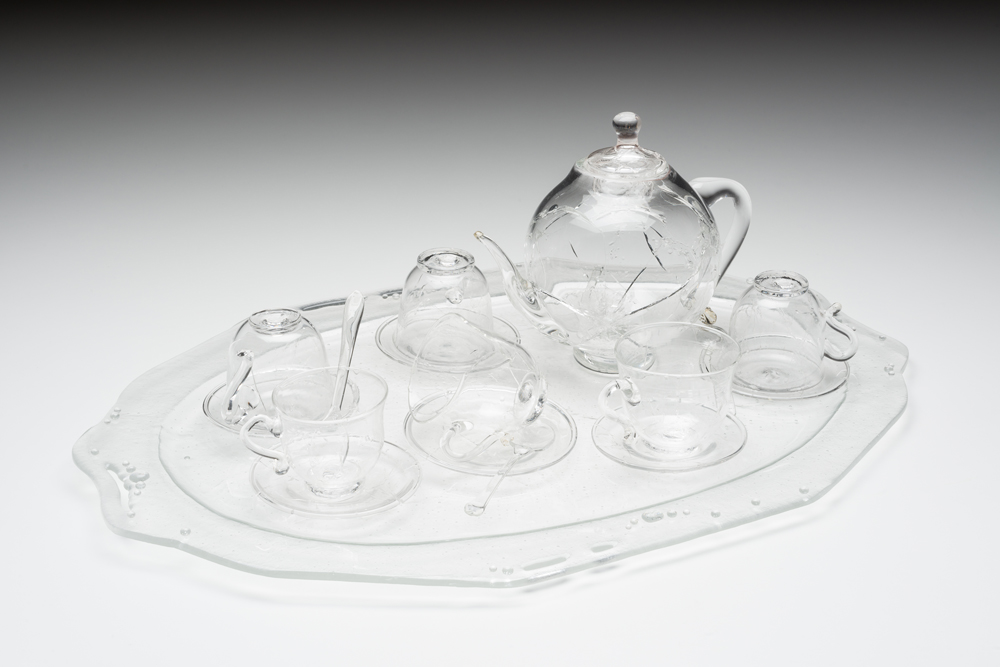
American artist Beth Lipman (b. 1971) is best known for her clear glass installations inspired by European and American still lifes. These works explore aspects

Paul Storr (British, 1771-1844) has been called “the last of the great goldsmiths.” [i] This reputation is rightfully deserved. During the late Georgian era Storr produced a
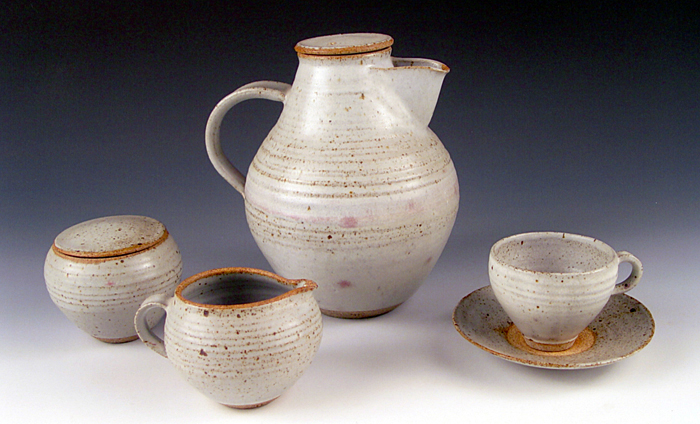
“[Karen Karnes] was a towering figure of the postwar studio pottery movement, pioneering salt-glazing in the 1960s and wood-firing in the 1980s. Her work opened undreamed
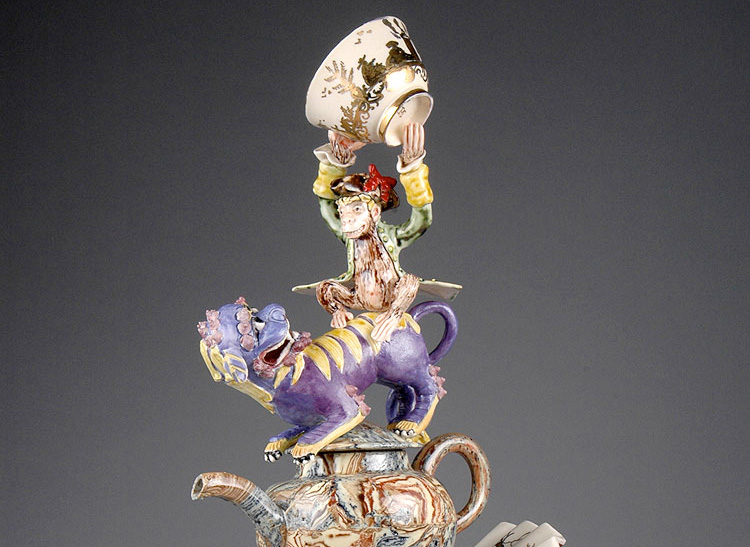
“Michelle Erickson is internationally recognized for her mastery of lost ceramic arts during the age of exploration and colonialism. Her contemporary work makes use of
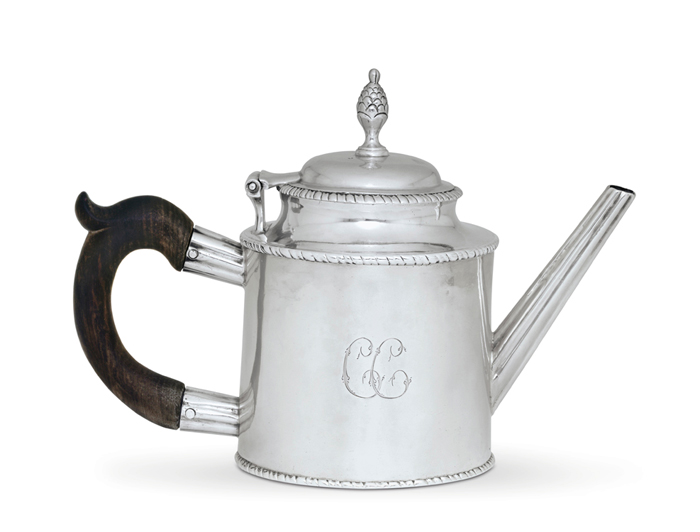
“During [Paul Revere’s] protracted life, his activity in business and benevolence, the vigor of his mind, and strength of his constitution were unabated…Seldom has the
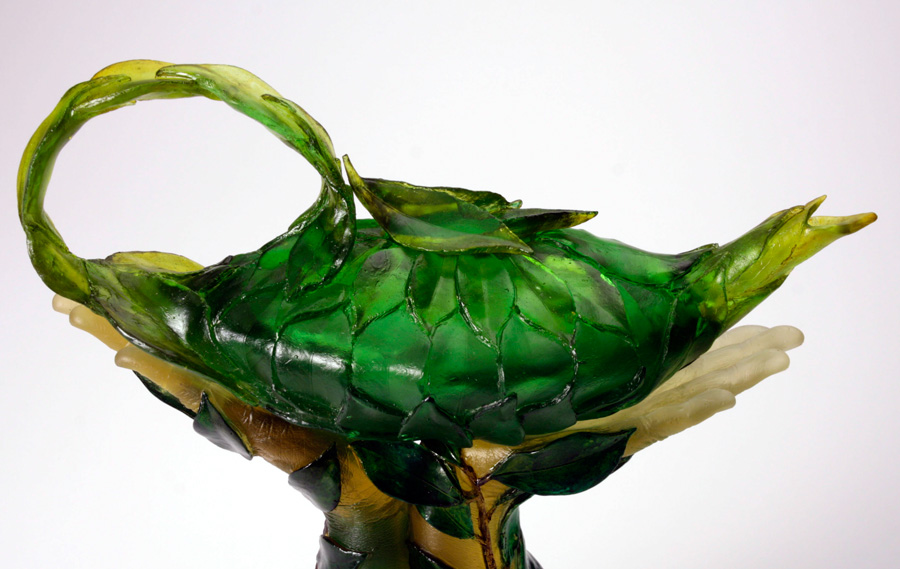
“…Our ideas are generated by the flow of making and our shared curiosity and wonder of the world (and people) around us…”[i] – John Littleton
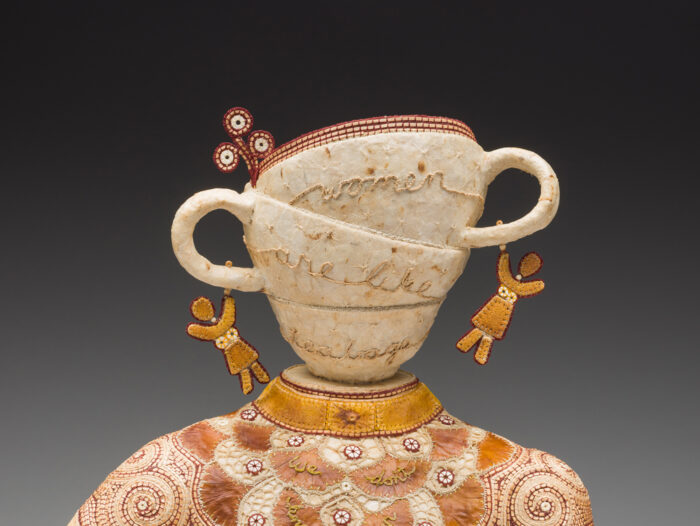
Fiber artist Jan Hopkins (American, b. 1955) has garnered a great deal of attention for her intricate baskets, teapots, and torso sculptures that utilize organic
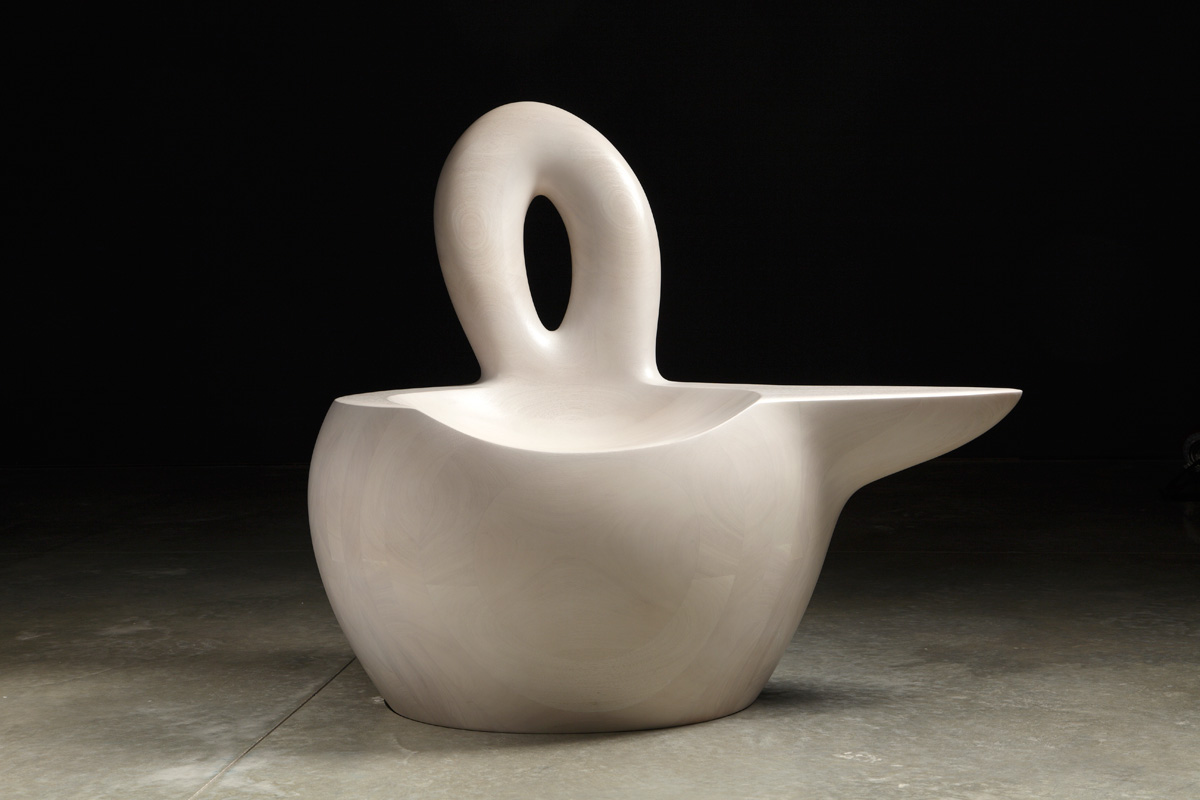
“Art is omnifarious. It appropriates all forms and assimilates all materials. The results should be a paradox…”[i] -Wendell Castle, 2016 Wendell Castle (American, 1932-2018) has
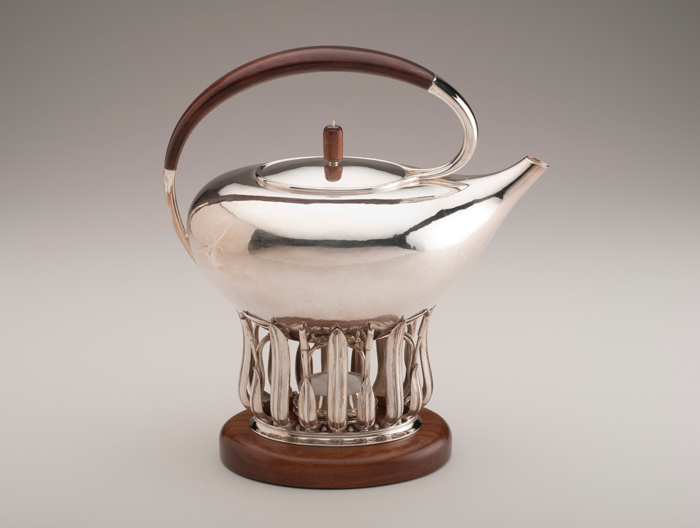
Silversmith Hans Christensen (Danish, 1924-1983) left an indelible impact on the field of metalwork in the United States. In the latter portion of the twentieth
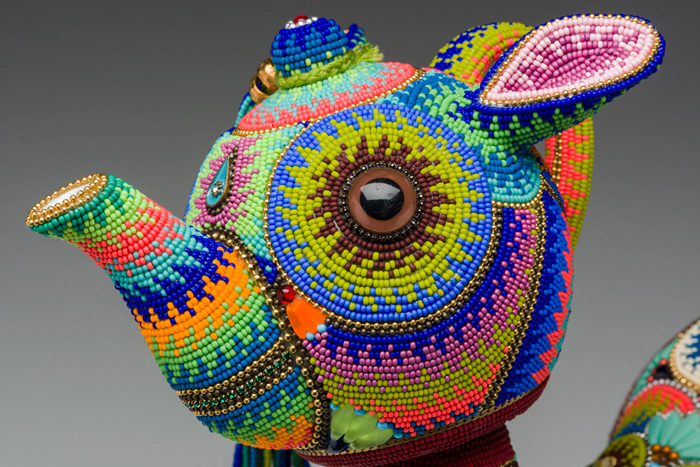
“With each new row of beads, I more clearly see the personality of the piece emerging and it tells me what color needs to follow,
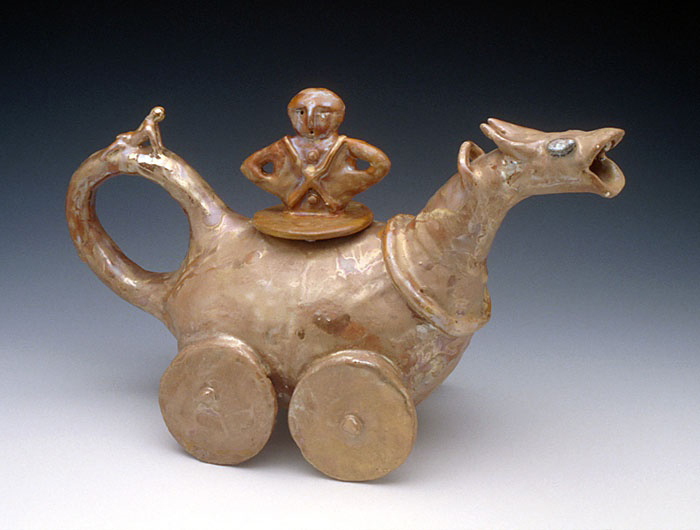
“Beatrice Wood combines her colors like a painter, makes them vibrate like a musician. They have strength even while iridescent and transparent. They have the
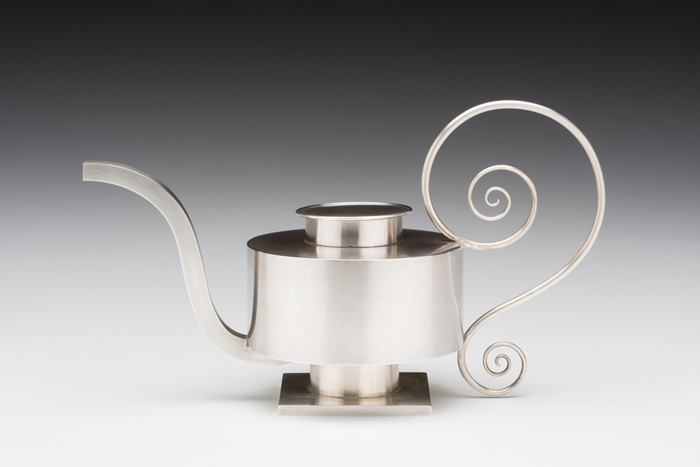
“…John Prip has set the standards of excellence in American metalsmithing…As an artist, he has stretched the horizons of the field. As a teacher, he

When we discovered Cubism, we did not have the aim to discover Cubism. We only wanted to express what was in us.[i]-Pablo Picasso Pablo Picasso
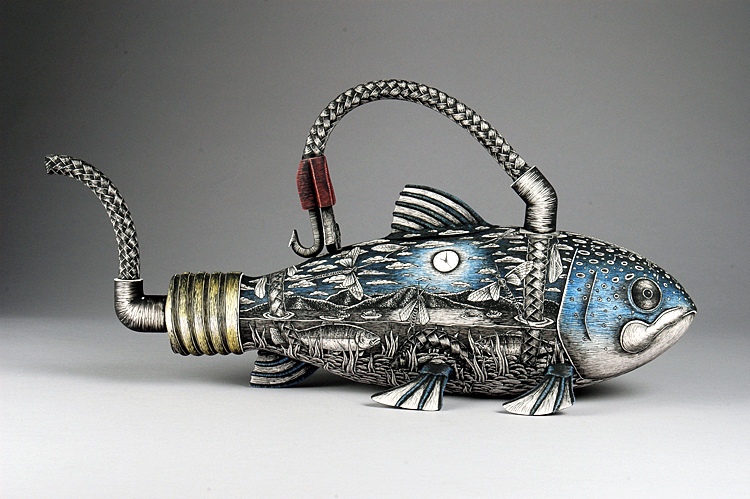
This blog post concentrates on another prevalent theme within the Kamm Teapot Collection, art influenced by industry. These objects contain recognizable industrial references such as
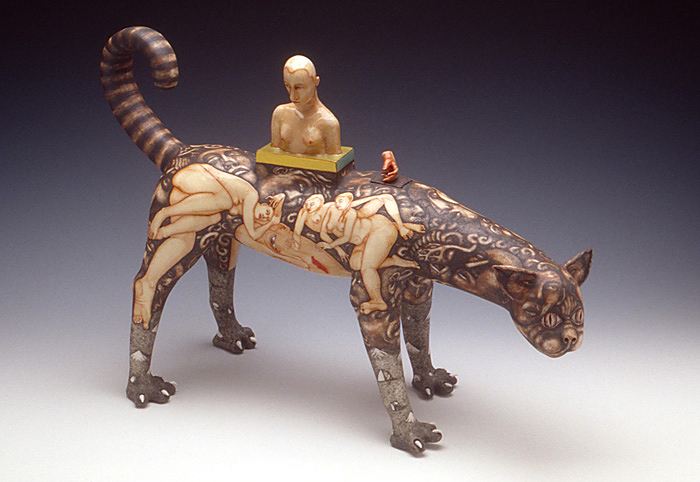
For this blog post we will focus on two ceramicists, Kurt Weiser and Sergei Isupov, who are known for covering the surfaces of their designs
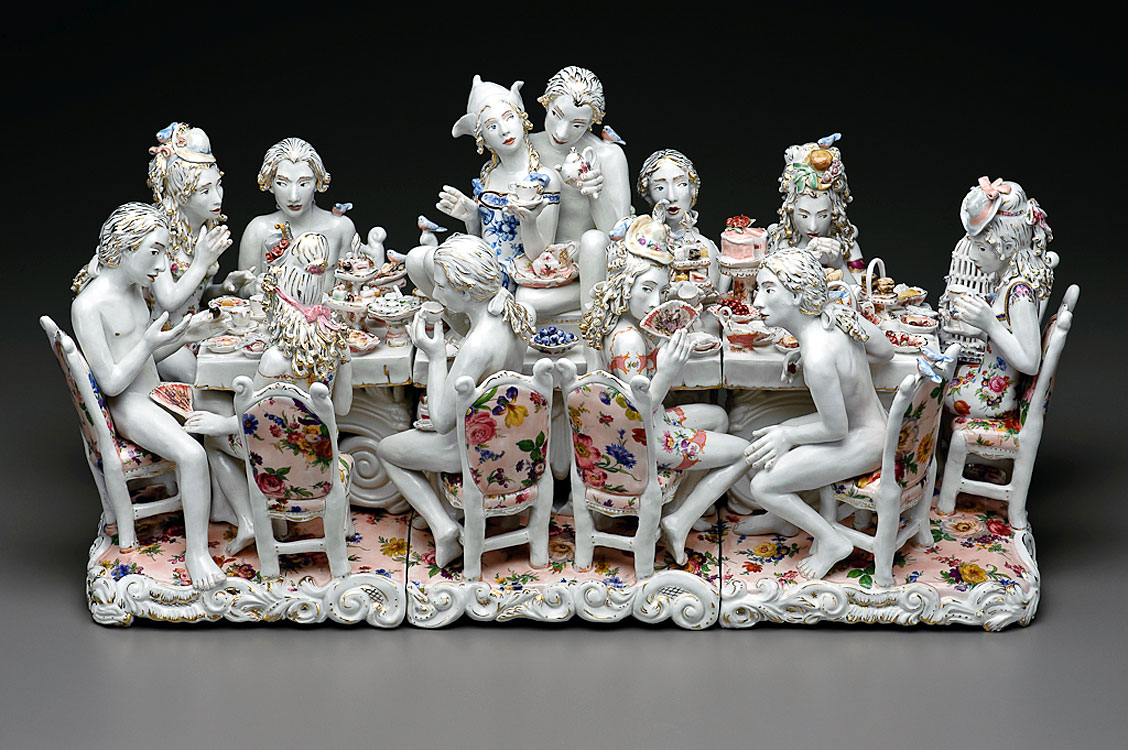
The Kamm Teapot Collection contains numerous contemporary works in clay that look to historical ceramic traditions for inspiration. These designs might contain reflections of ancient

“Funk art: the art of the absurd, the ridiculous, the exaggerated.”[i] – John Natsoulas In the 1950s and 1960s some American artists began reacting against
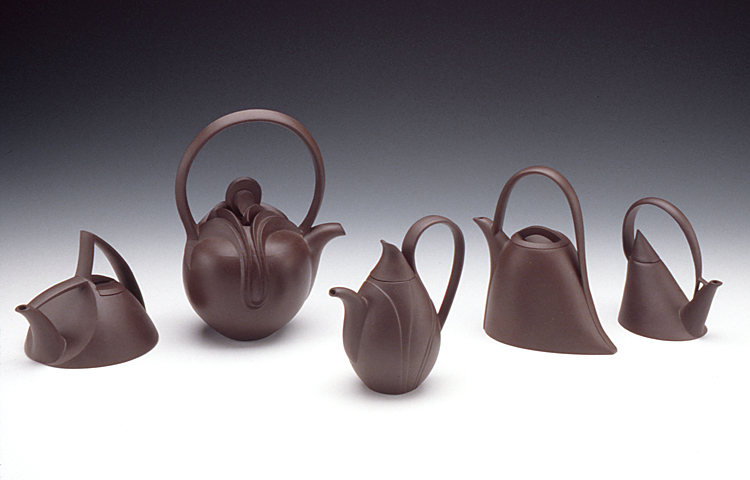
Yixing is a city, a type of clay, and a style of pottery.[i] The city of Yixing is located on the Yangtze River Delta in
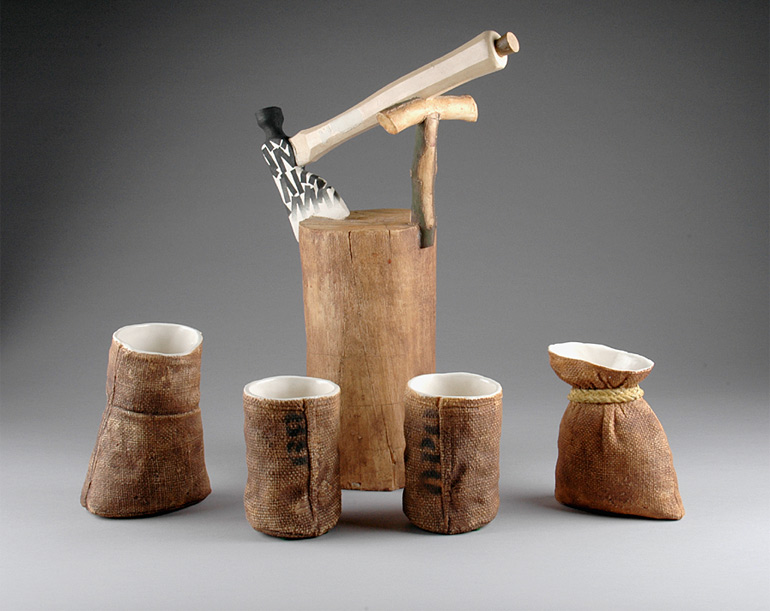
Trompe l’oeil: A French term that means to “deceive the eye.” Artists utilize this illusionistic technique to mislead the senses and effectively “blur the boundaries
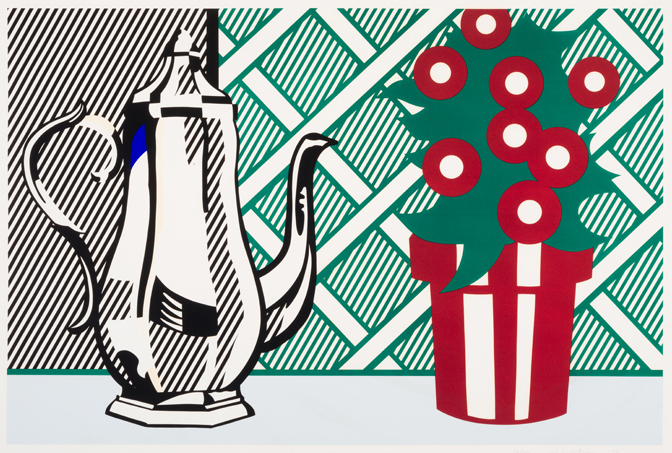
“Pop Art looks out into the world. It doesn’t look like a painting of something, it looks like the thing itself.”[i] – Roy Lichtenstein Pop
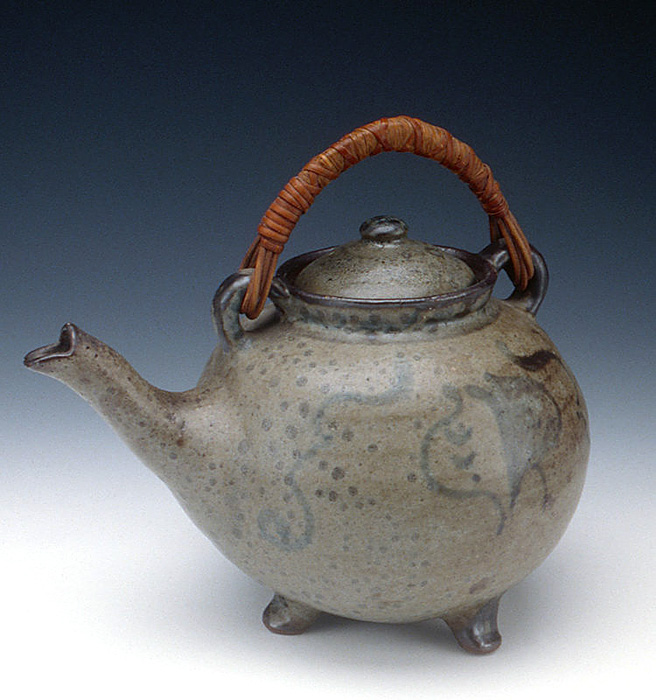
“A potter is one of the few people left who uses his natural faculties of heart, head, and hand in balance…”[i] — Bernard Leach, 1961 Bernard
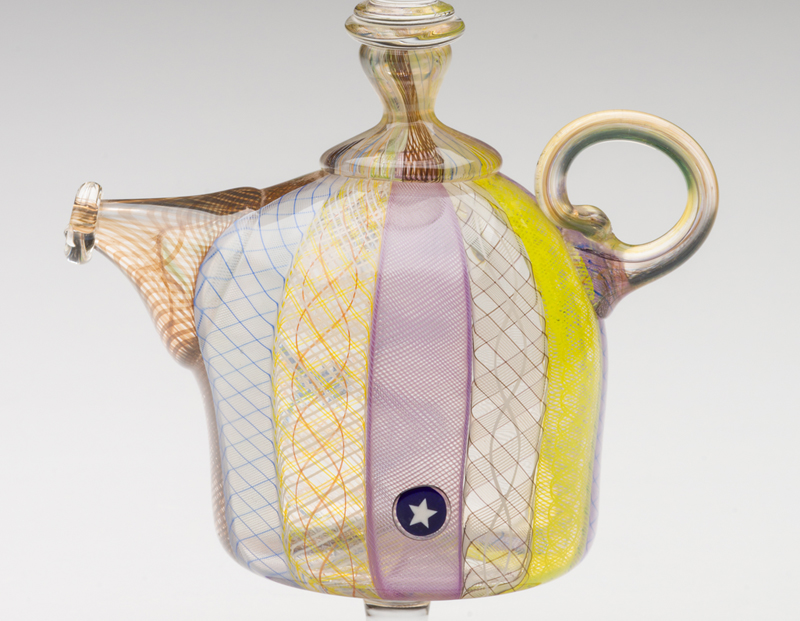
“While Dale Chihuly is the tide that raised all boats, Marquis is the craft intelligence that made the vessels seaworthy.”[i] – Regina Hackett, Seattle Post, 2001
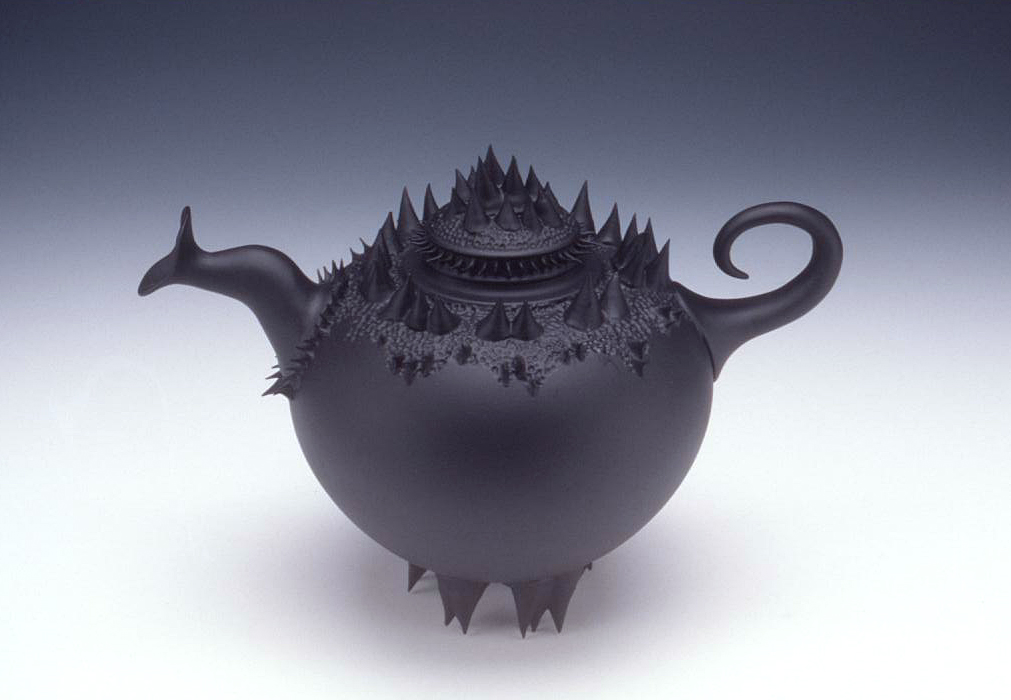
“Just realizing that I am making work that other people respond to is very motivational.”[i] -David Sengel David Sengel is an expert in manipulating
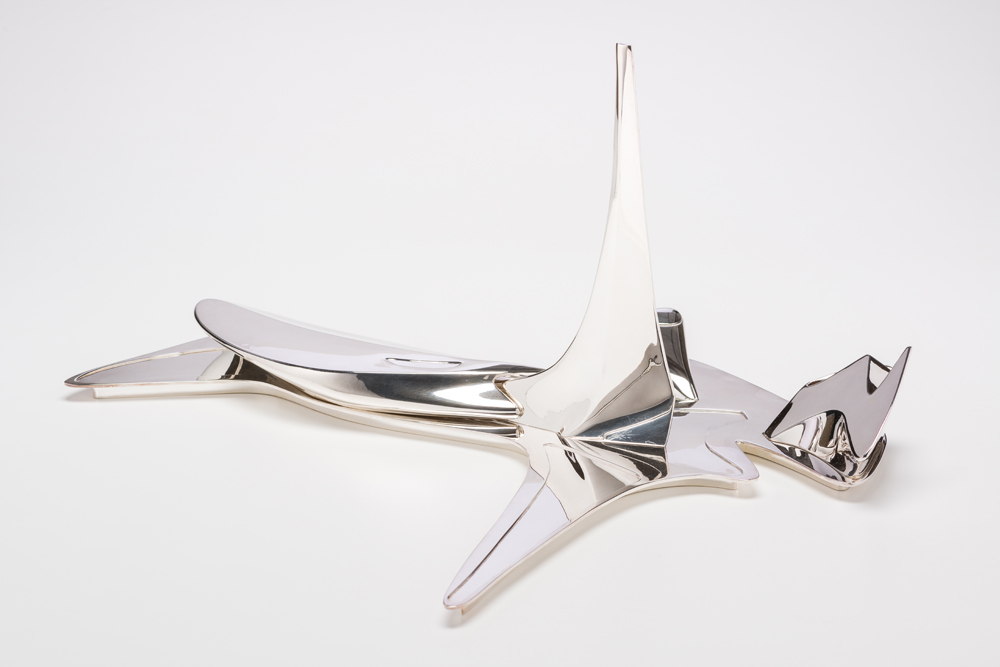
“As a woman, I’m expected to want everything to be nice and to be nice myself. A very English thing. I don’t design nice buildings
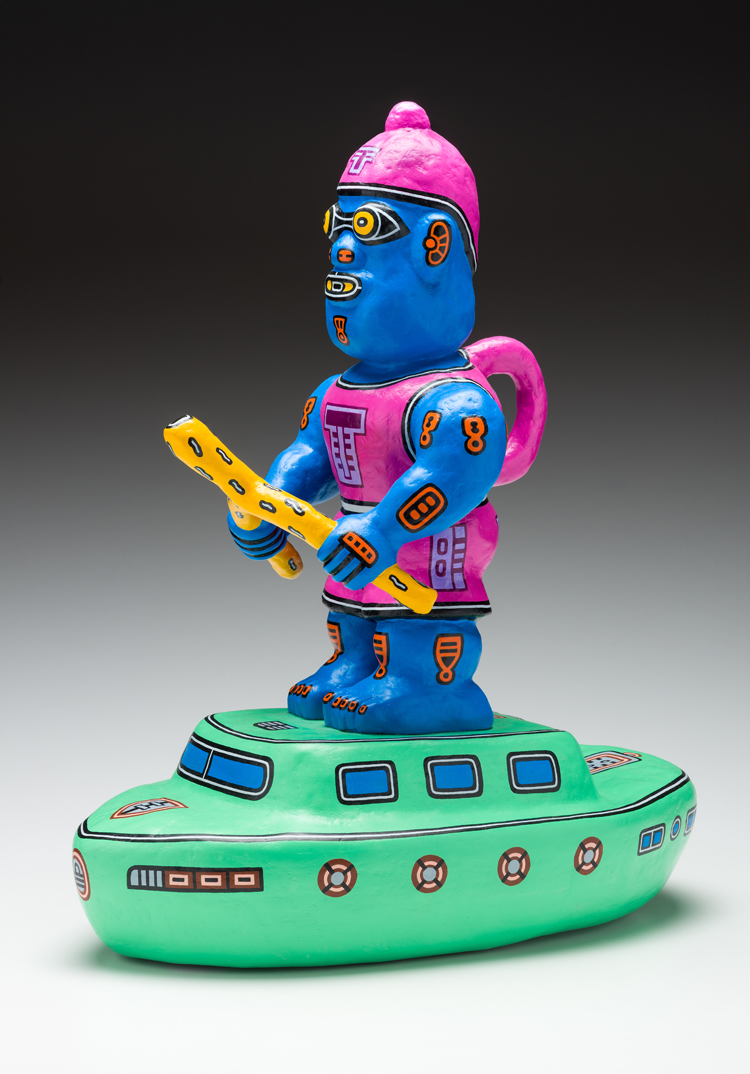
Karl Wirsum’s sculpture, paintings, and drawings are imaginative, colorful, humorous, and at times, disturbing and “cheerfully grotesque.”[i] Utilizing a range of materials and techniques, he
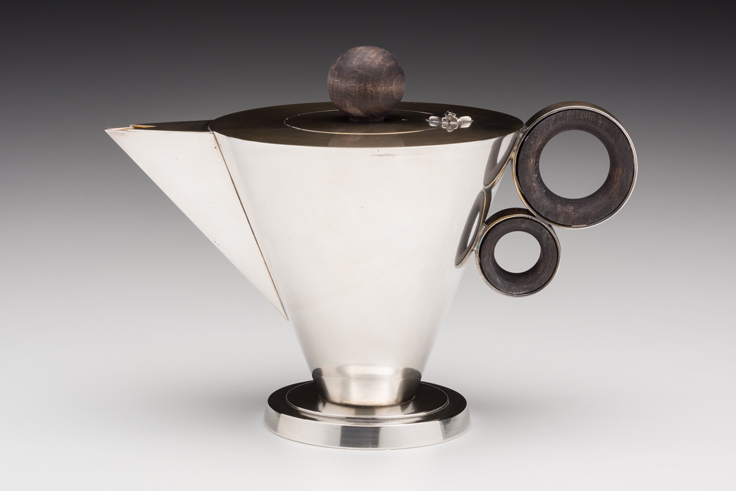
“I am what time, circumstance, and history have made me, certainly, but I am also, much more than that. So are we all.” –James A.
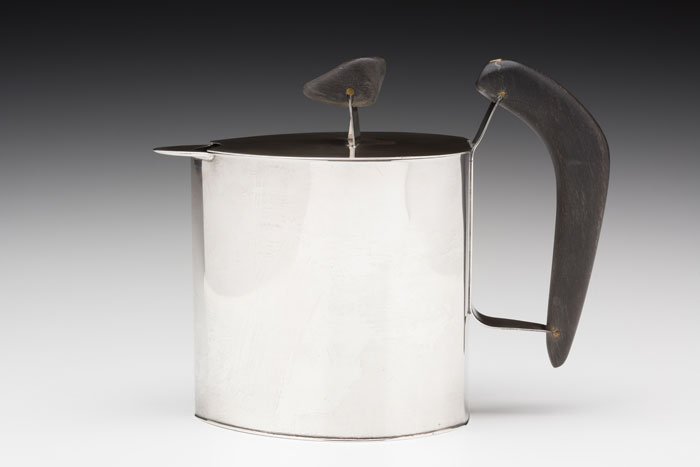
“I am rather silent, resolute, and industrious. I respect and admire persons of probity and morality, moderation and temperance. I can use any tool or
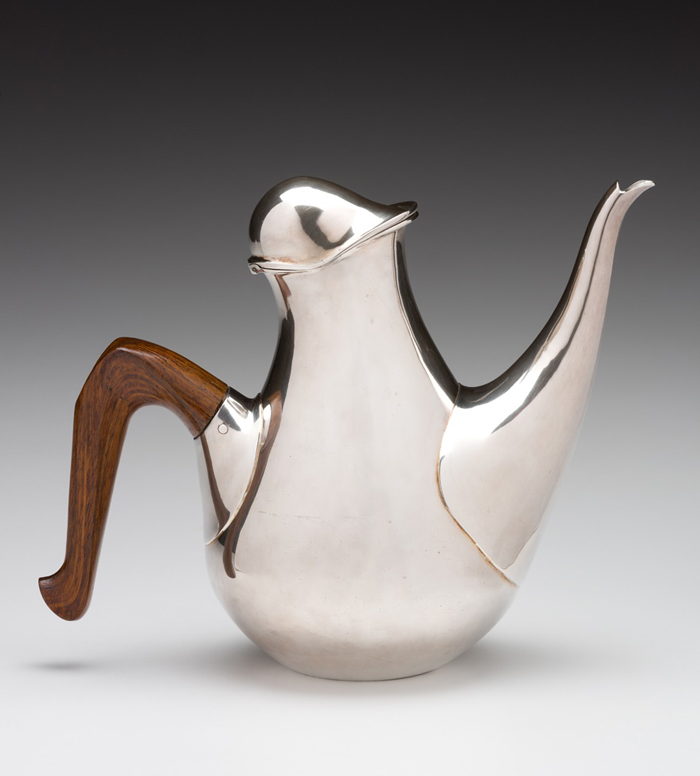
“…In creating a work of art, besides my personal experience, my concern is how it emotionally and intellectually engages the viewer…”[i] – Albert Paley Albert
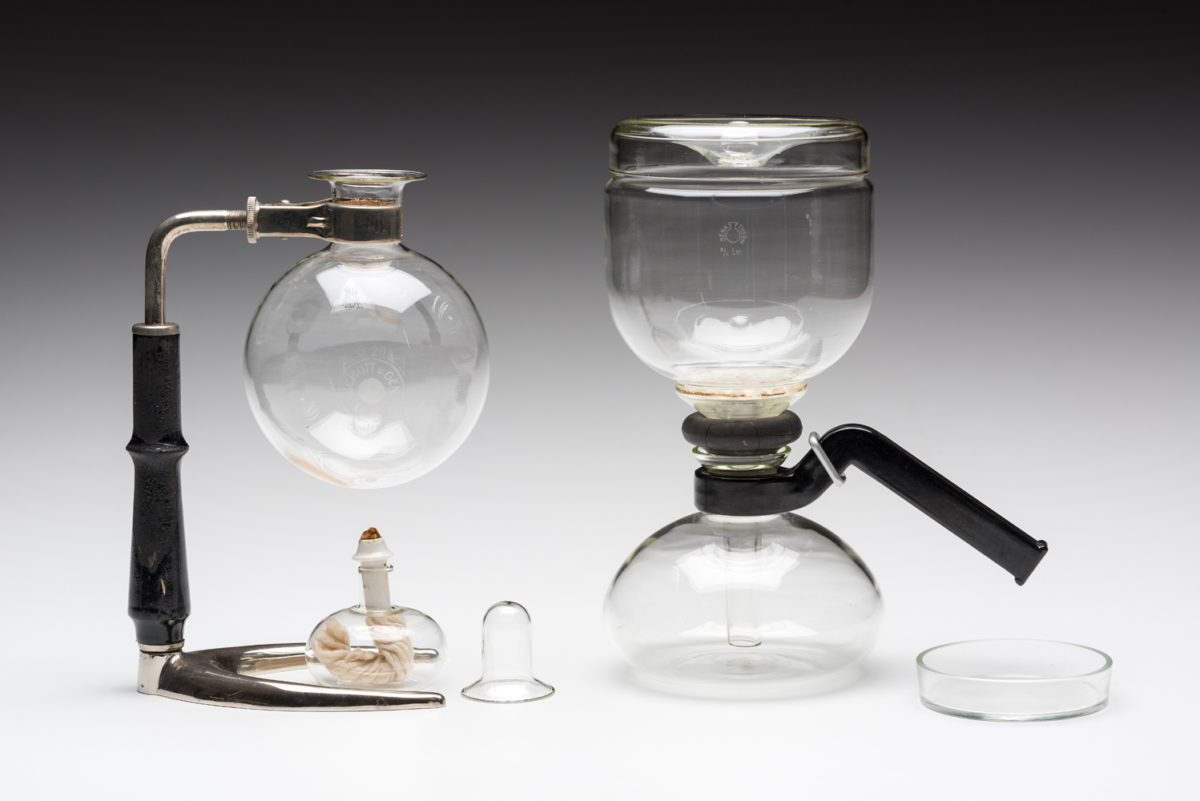
This Schott & Genossen coffee machine was designed by the sculptor, printmaker, and Bauhaus master, Gerhard Marcks.[i] Schott & Genossen, which always “had a great
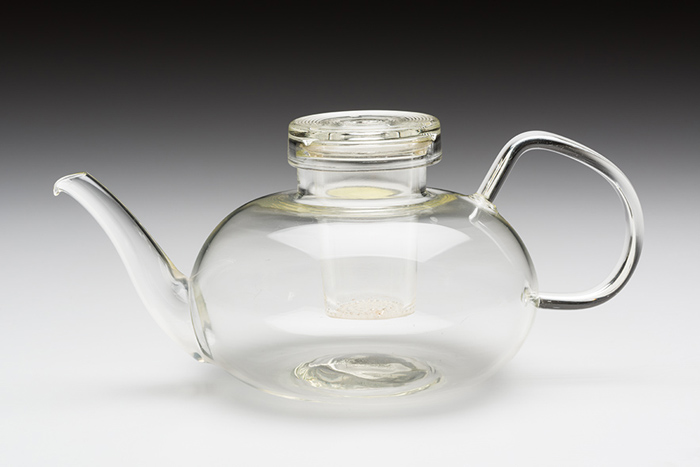
“Objects must do us good and make us take notice and think about them.”[i] – Wilhem Wagenfeld, 1948 Wilhelm Wagenfeld is one of the

Hester Bateman (1709-1794, née Needham or Neden) was an English silversmith known for creating high-quality, lightweight home wares in the 18th century. BATEMAN’S TRAINING Like
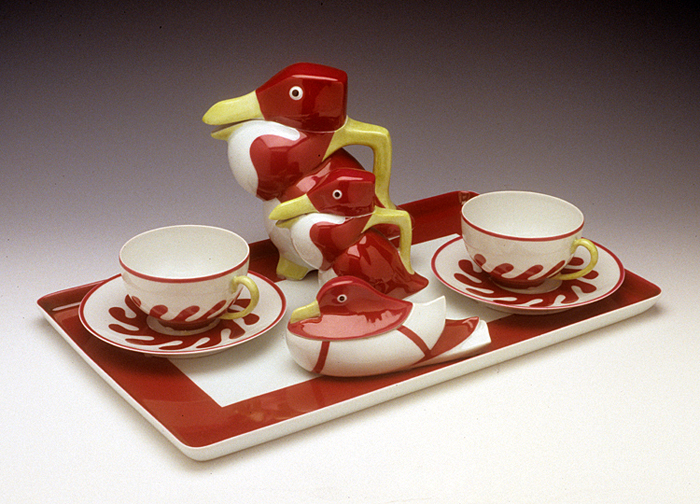
This tea set, designed by Édouard-Marcel Sandoz (Swiss, 1881-1971), is one of many tableware sets designed by popular artists for the porcelain manufacturing company Theodore

I remember being captivated by Ron Meyers’ cups, platters, and covered jars as a child. The imagery that danced across the surface of his forms
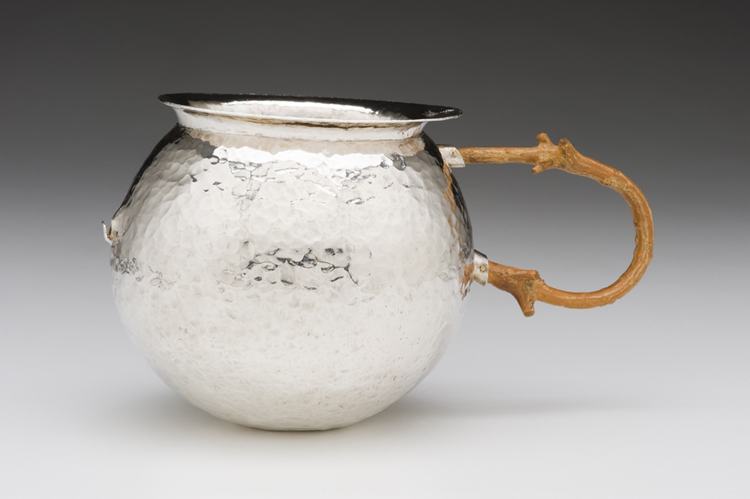
Gary Lee Noffke (American, b. 1948) is a complex person who cannot be pigeonholed. He is often described as a metalsmith’s metalsmith, a pacesetter, and
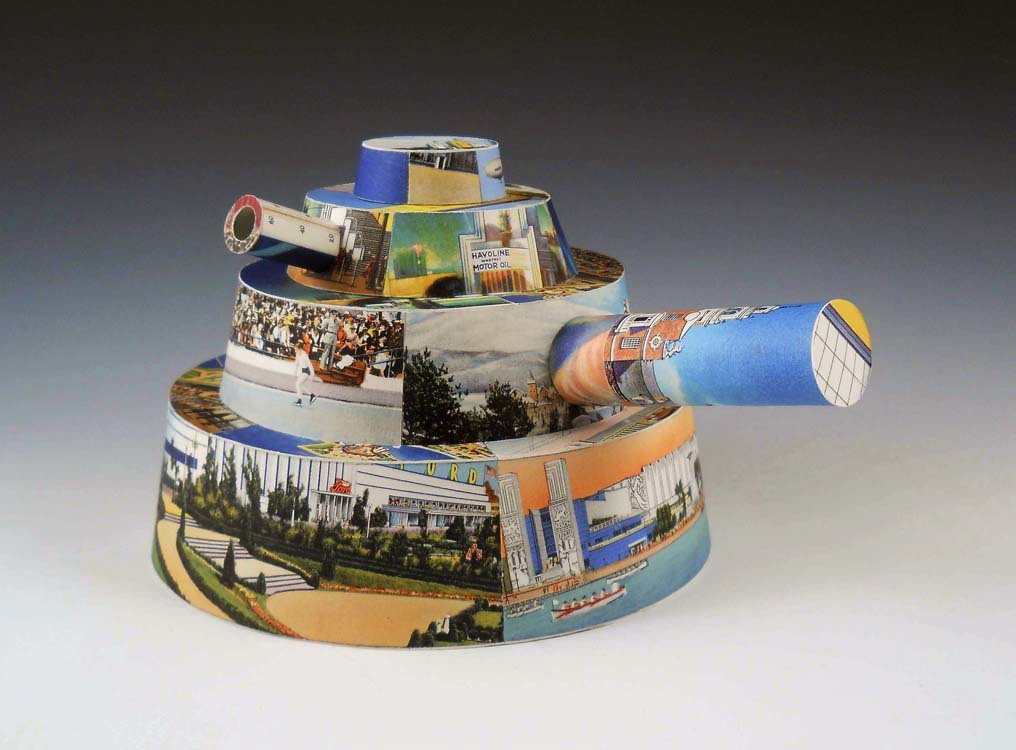
Billie Jean Theide is an American artist known for creating sculptures and ornamental works in both metal and ceramics, which sometimes also incorporate found-objects or
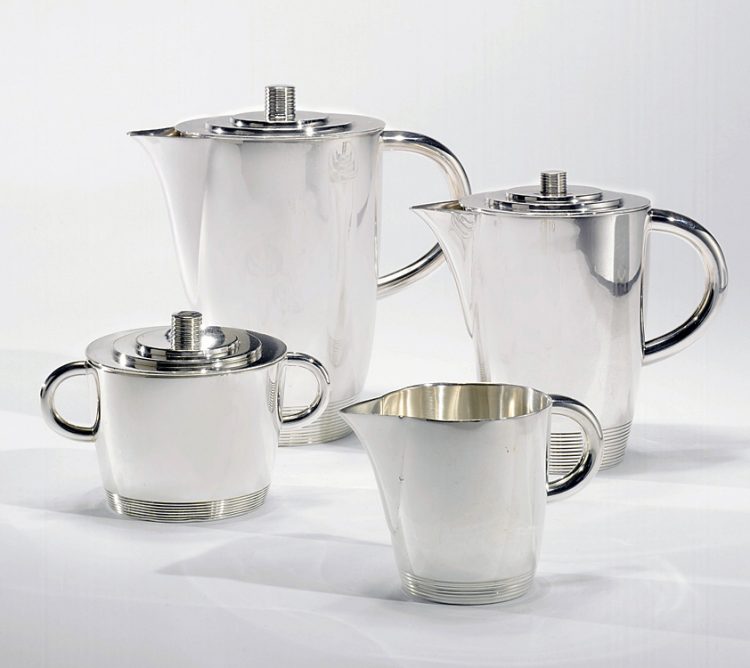
Lurelle Van Arsdale Guild (American, 1898-1985) accomplished more in one lifetime than most would attempt in seven.[1] Guild was an avid collector of antiques, a
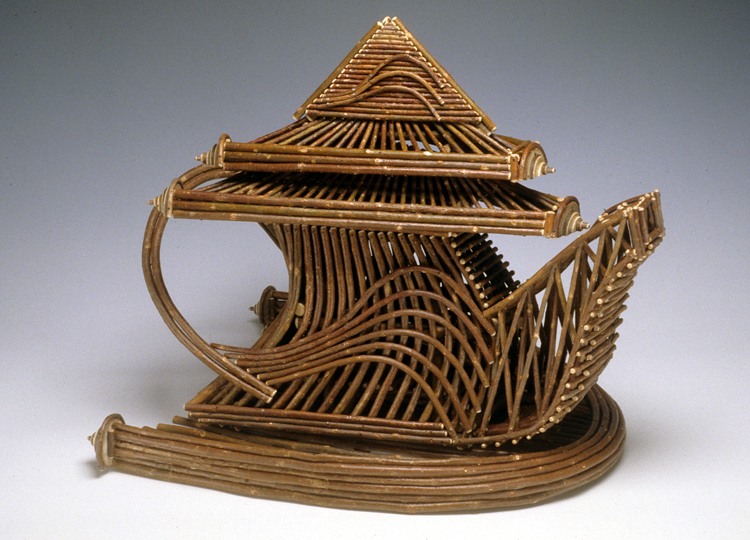
This teapot-shaped sculpture has three parts—the teapot-body, a lid, and a base or tray that it sits upon. Kimberly Sotelo, an artist and furniture-maker, created
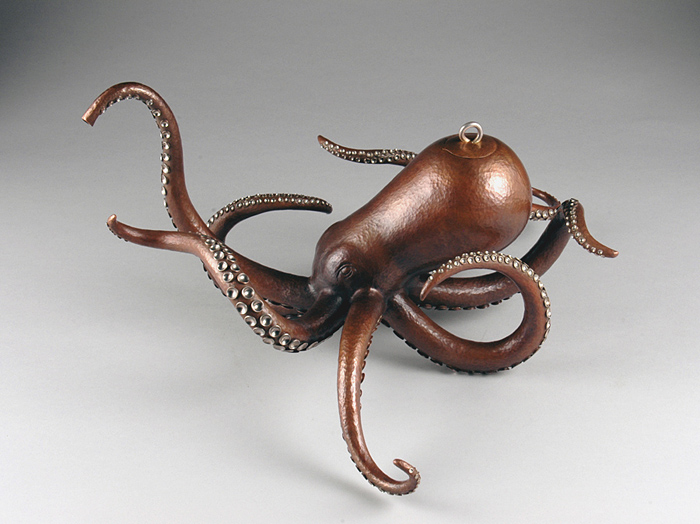
This octopus-shaped vessel by Miel-Margarita Paredes is a fully functional teapot with a removable lid over the hollow space in the head that forms the
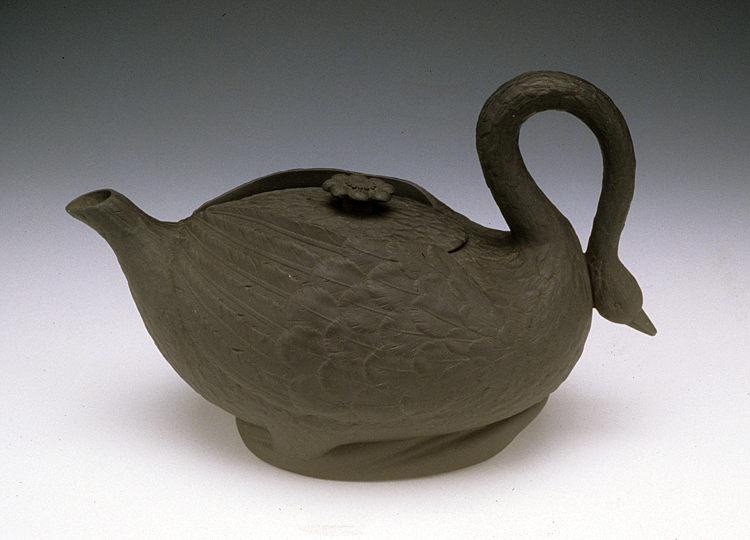
This stoneware teapot is attributed to Sowter & Company, an early 19th century pottery manufacturer. Sowter & Company—also called Mexborough Old Pottery—was one of several

These two works of art were both acquired from the estate of the influential art critic, historian, and collector Henry Geldzahler (1935-1994). Geldzahler began his

Writing in his diary on Sunday, September 27th, 1869, William Henry Jackson explained that, “after his afternoon tea, he went to the depot to see
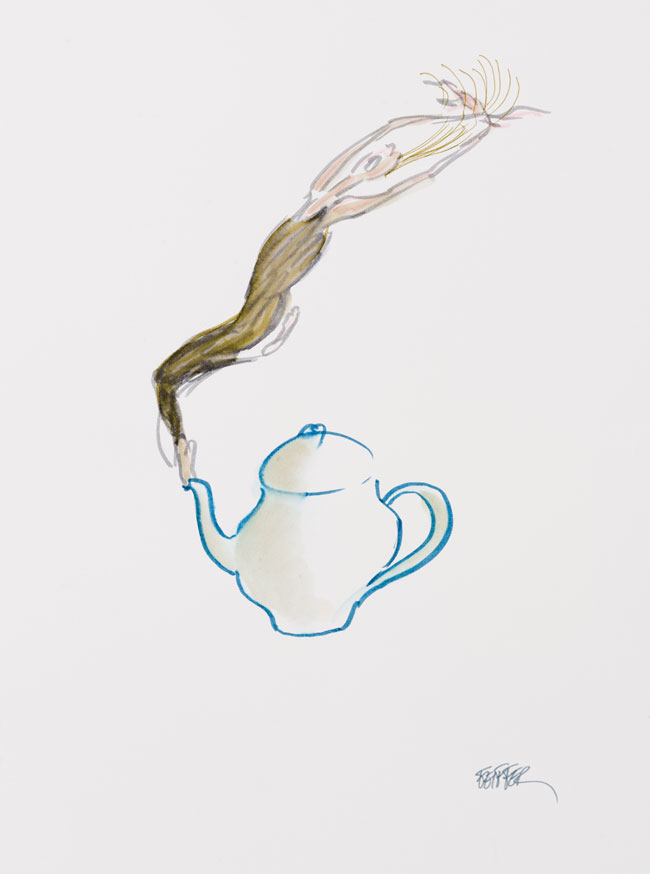
This drawing was commissioned by the Kamm Teapot Foundation from cartoonist and writer Jules Feiffer. Feiffer has drawn and written for numerous projects, including his
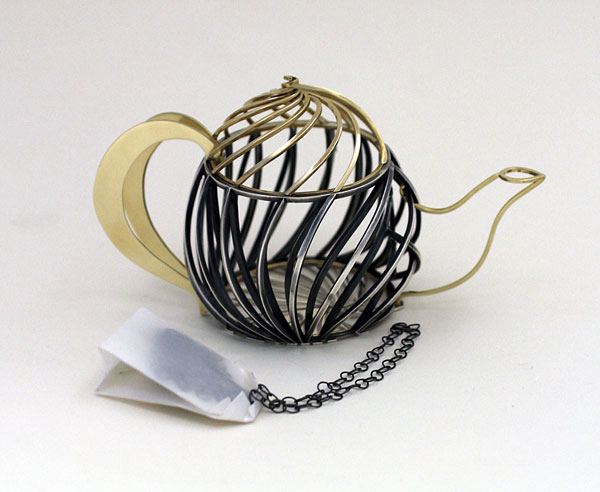
This small sculpture by contemporary jeweler Leah Meleski (American, b. 1985) is a clever use of the teapot form as wearable art. The sculpture is
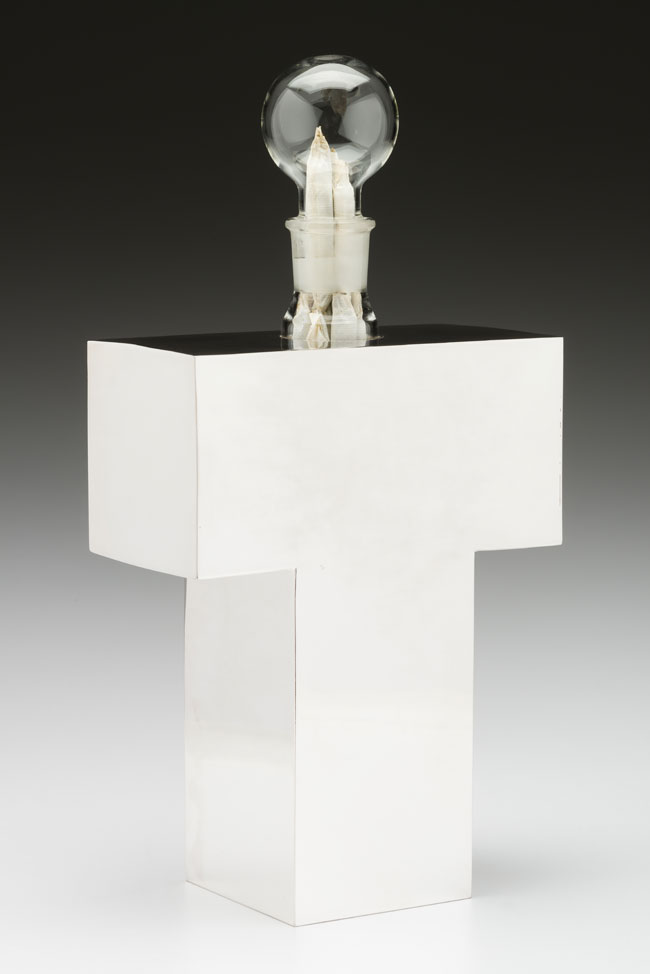
This sculpture is an example of an artwork made specifically for the Kamm Teapot Foundation. As patrons of the arts, Foundation trustees Sonny and Gloria

The Kamm Teapot Collection has several artifacts from the early 1920s about political corruption in the Republican administration of President Warren G. Harding. The Teapot
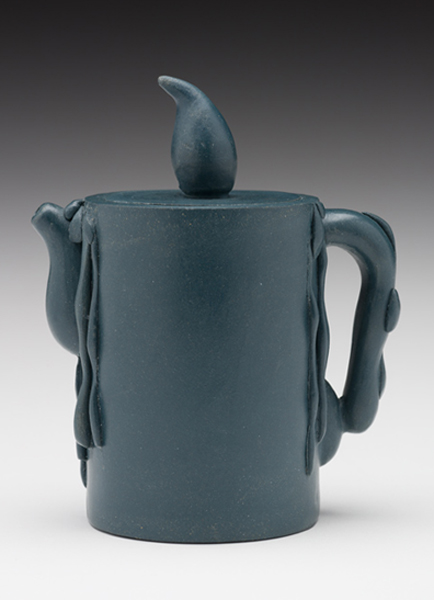
This teapot is an example of Yixing (also spelled YiXing) pottery, from the Yixing region in the Jiangsu province of China. This particular teapot, made
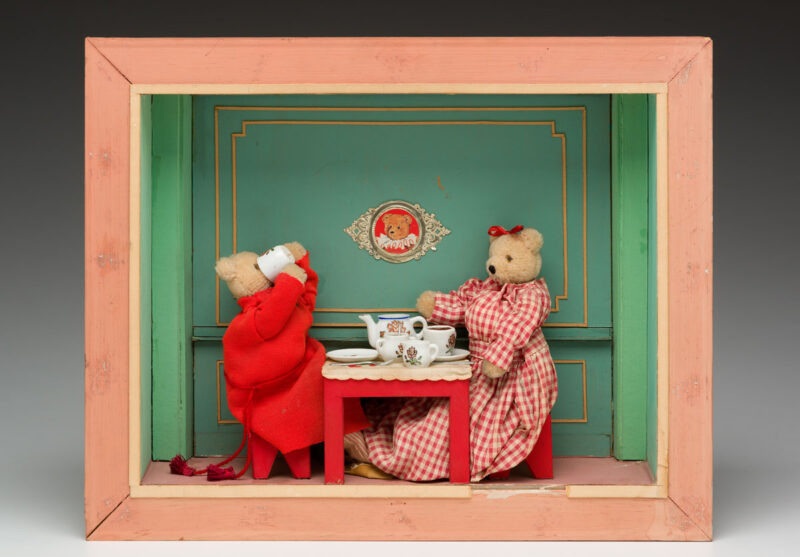
This diorama of two bears drinking tea together was created as a window dressing for the jewelry company Tiffany & Co., by the window dresser
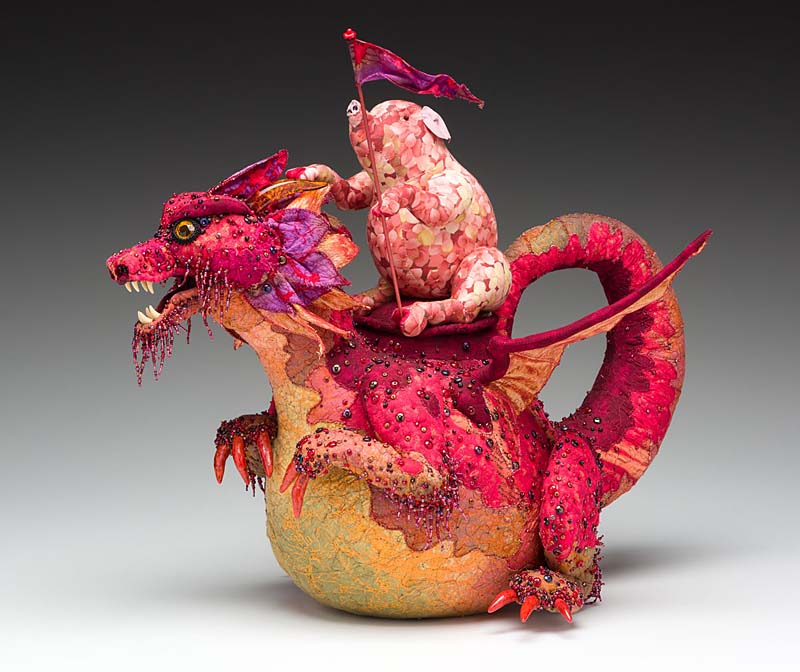
This large teapot sculpture was created by the quilter and bead artist Thom Atkins, and takes the form of a pig riding a winged-dragon. In
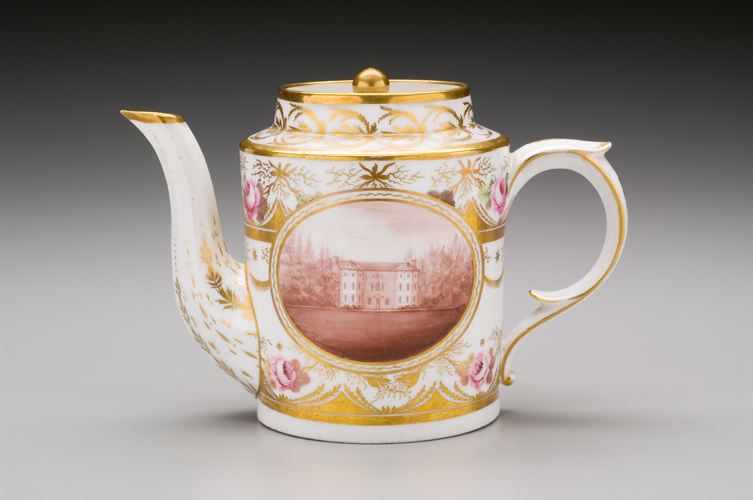
This teapot was decorated by the renowned porcelain painter William Billingsley (British, 1758-1828). Billingsley began his career working for Royal Crown Derby, though later worked
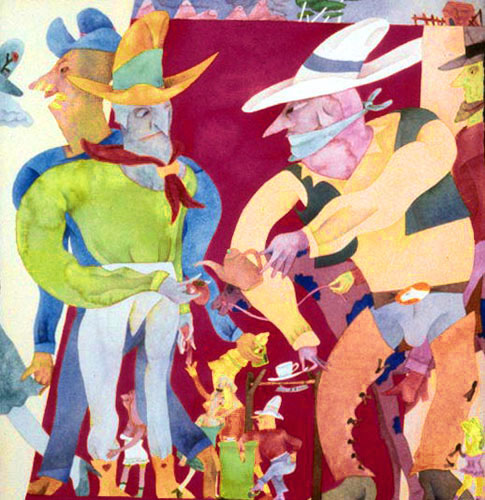
This painting is by the contemporary American artist Gladys Nilsson, who is known for her colorful, often surreal figurative watercolor paintings. She currently teaches painting
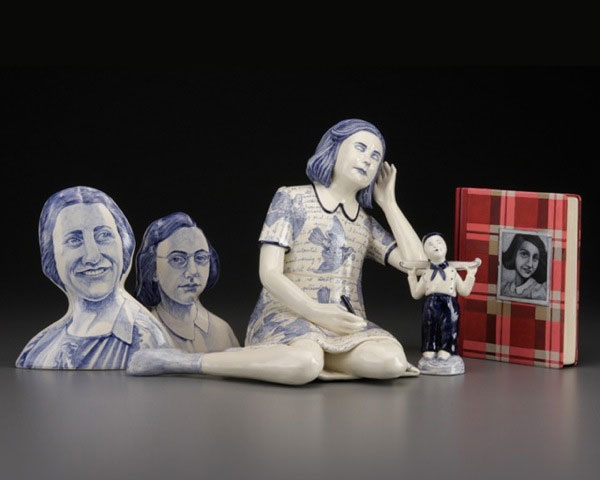
Laura (Red) Weldon Sandlin (American, b. 1958) Hidden Identitea 2009 ceramic, painted wood 20.5 x 22.2 x 9.5” Photos: John Polak, courtesy of the Ferrin

This teapot sculpture by ceramicist Gerry Wallace takes the surprising form of an aircraft carrier warship, which sits on a separate base made in the
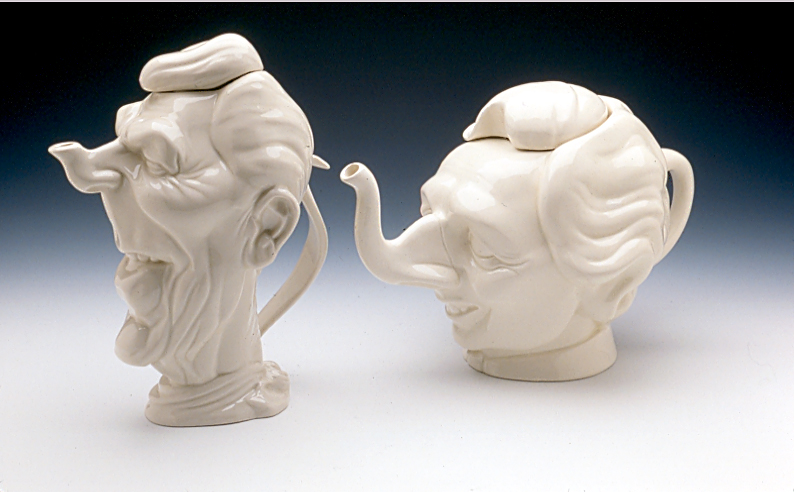
These teapots were designed by British satirists Roger Law (b. 1941) and Peter Fluck (b. 1941), who first met and became friends in art school.
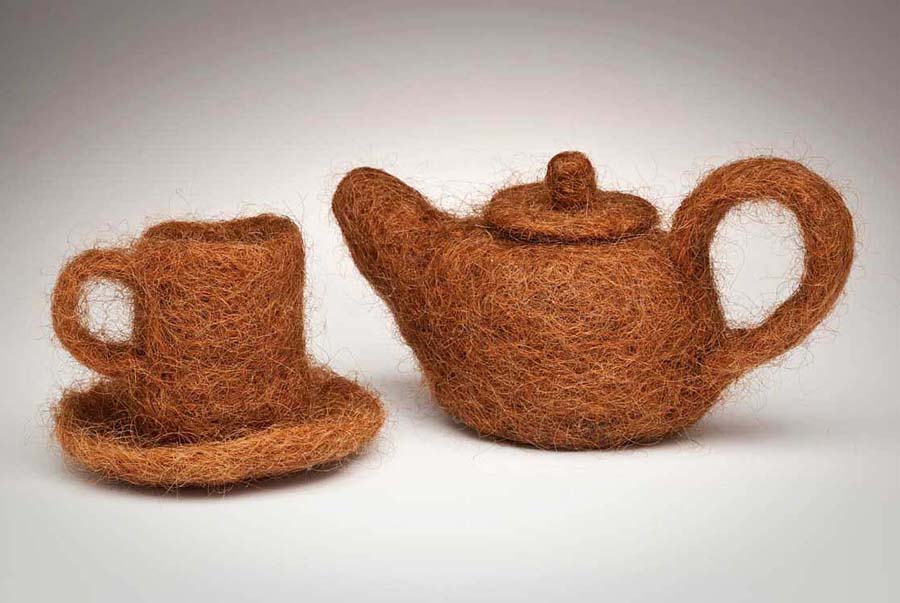
This teapot, teacup, and saucer were created by the fiber artist Annin Barrett, who lives and works in Oregon and teaches textiles, art, design, and
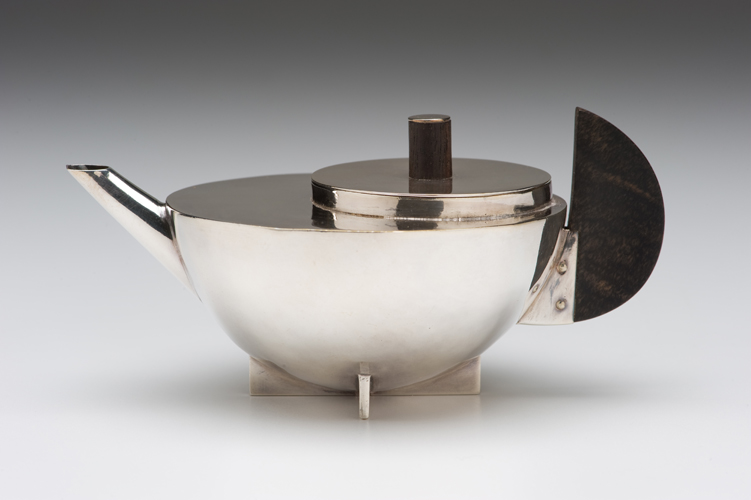
This teapot was designed by Marianne Brandt, an important designer of the Bauhaus School. Brandt first made this teapot while she was a student at the
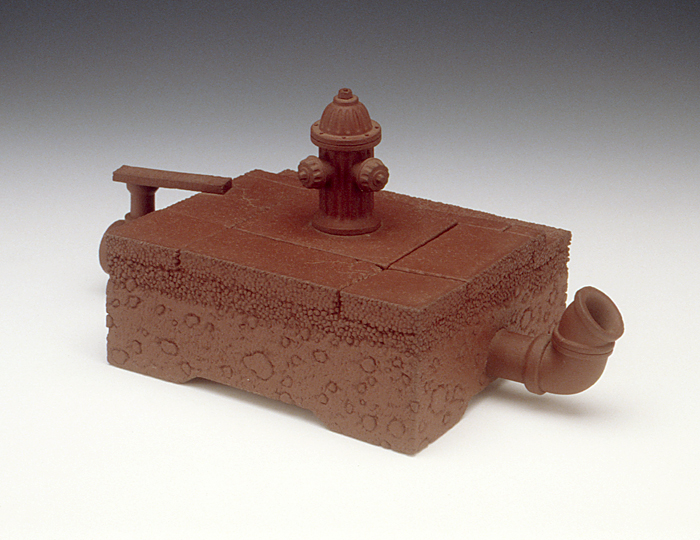
These teapots in the Kamm Collection by the ceramicist Richard Notkin (American, b. 1948) were created as part of his Yixing series. Though Notkin is
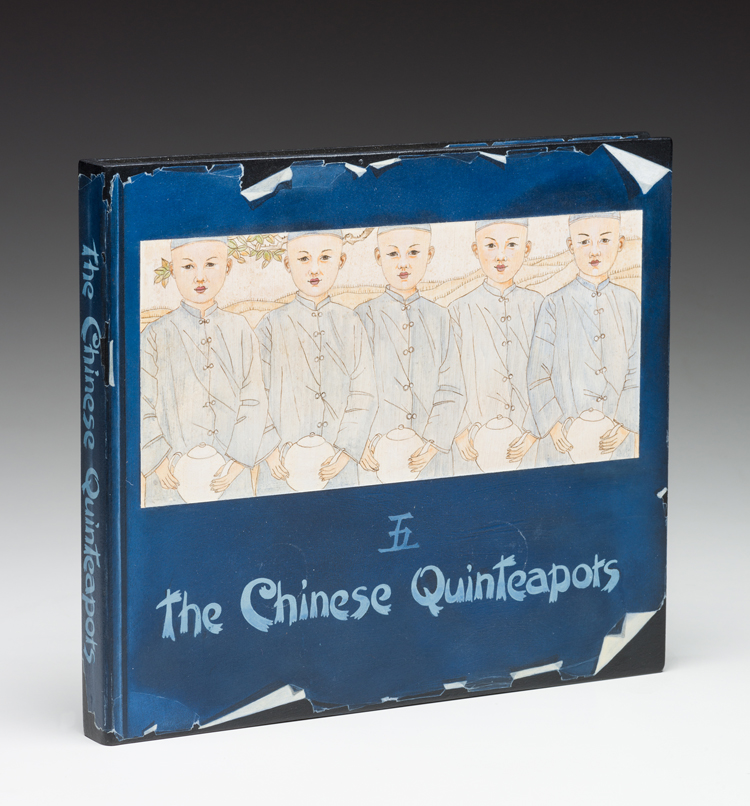
Red Sandlin (American, b. 1958), The Chinese QuinTeapots 2003. Ceramic, painted wood, 39 x 10.75 x 9.25 in. Kamm Collection 2003.36.3. Photos: David H. Ramsey.
Kamm Teapot Foundation
1950 Flintstone Drive
Statesville NC 28677
704.876.1180
Kamm Teapot Foundation, © 2011-2024. All rights reserved.
website by pixel princess design